The omnichannel customer experience model connects every point of customer interaction, from initial research to post-purchase support. Unlike traditional customer experience strategies, which may focus on single-channel optimization, omnichannel customer experience integrates all channels, providing a cohesive and harmonious journey. This approach has become increasingly important in a world where customers switch between devices and platforms, expecting seamless transitions between online and offline experiences.
As businesses strive to meet the ever-growing expectations of consumers, understanding and implementing an omnichannel customer experience strategy is crucial for staying competitive and fostering long-term customer loyalty.
Table of Contents
- Understanding Omnichannel Customer Experience
- Benefits of an Omnichannel Customer Experience
- Key Challenges in Implementing Omnichannel Customer Experience
- Key Elements of a Successful Omnichannel CX Strategy
- Best Practices for Designing an Omnichannel Customer Experience
- Tools and Technologies Supporting Omnichannel Customer Experience
Understanding Omnichannel Customer Experience
What is Omnichannel Customer Experience?
At its core, omnichannel customer experience refers to providing customers with a seamless and integrated experience across all channels and touchpoints. Whether a customer is shopping in-store, browsing a website, interacting with a mobile app, or engaging on social media, the omnichannel strategy ensures that the experience is cohesive and consistent. Every interaction, regardless of the platform, is interconnected, allowing for a fluid transition between channels.
A key characteristic of an omnichannel customer experience is the unification of customer data. This means that businesses have access to a comprehensive view of each customer’s journey, including previous purchases, preferences, and interactions across different platforms. This enables the business to deliver personalized experiences based on this data, ensuring that customers feel understood and valued regardless of where they engage with the brand.
Another defining feature of omnichannel customer experience is consistency. Customers expect to receive the same quality of service and product information no matter which channel they use. For example, a promotion seen on a mobile app should be available in-store, and a product added to a cart on a website should still be in the cart when accessed via a mobile device. This level of synchronization is crucial in building trust and loyalty, as it shows that the business values the customer’s time and preferences.
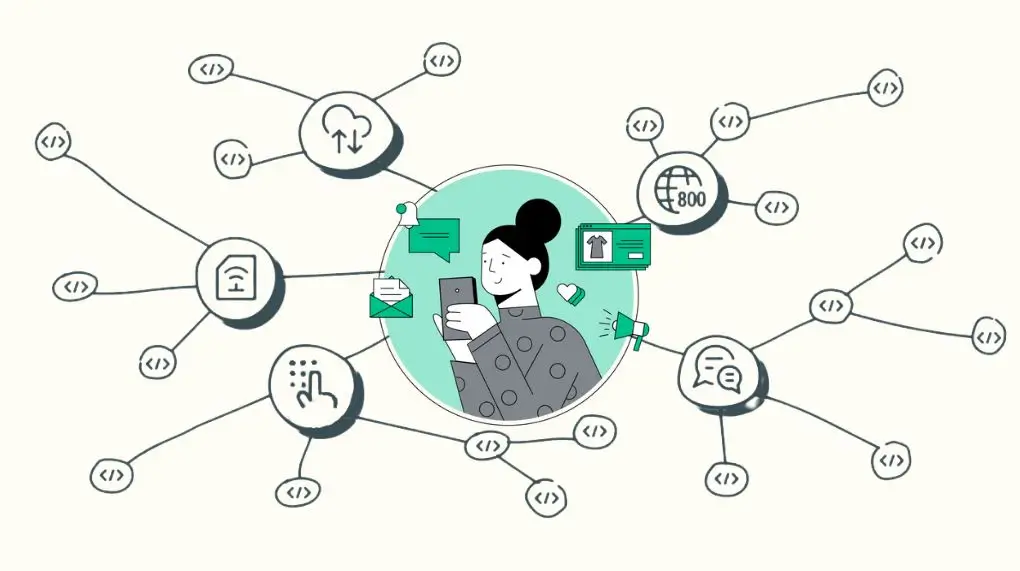
While omnichannel customer experience might sound similar to multi-channel or cross-channel strategies, it is important to understand the key differences.
Multi-channel customer experience refers to businesses offering customers multiple ways to interact, such as physical stores, websites, social media, and apps. However, these channels are typically siloed, meaning that each channel operates independently. For example, a customer might receive a different level of service in-store compared to online, and data from one channel may not carry over to the next. This approach, while offering variety, often lacks the interconnectedness that today’s consumers expect.
Cross-channel customer experience improves upon the multi-channel approach by offering more integration between channels. In this model, customers can begin their journey on one channel and continue it on another. For example, a customer could order a product online and pick it up in-store. However, even in cross-channel strategies, there can still be inconsistencies in communication, customer data, and overall experience from one touchpoint to the next.
The omnichannel customer experience, on the other hand, takes full integration a step further. It not only allows customers to transition between channels effortlessly but also ensures that all customer data, interactions, and preferences are synchronized across every touchpoint. This means the brand interacts with the customer in a cohesive, unified manner, providing a seamless journey that feels personalized and consistent regardless of where or how the interaction occurs.
In summary, while multi-channel and cross-channel experiences offer customers access to various platforms, omnichannel customer experience focuses on delivering a unified, continuous journey. This is what makes omnichannel the preferred model in today’s customer-centric business world—consumers expect brands to understand them on a deeper level and provide a frictionless experience at every step of their journey. As businesses continue to adapt to this expectation, omnichannel customer experience will remain a crucial aspect of staying competitive and meeting customer demands.
Key Components of Omnichannel Customer Experience
Consistency Across Channels
One of the most critical aspects of a strong omnichannel customer experience is maintaining consistency across all channels. Whether customers are engaging with a brand online, in-store, through a mobile app, or via social media, they expect the experience to be seamless and uniform. This means that all elements—from branding, messaging, and promotions to product information and customer service—should remain consistent regardless of the platform.
Consistency plays a vital role in building trust and reinforcing the brand’s identity. When customers receive the same quality of interaction across different channels, they begin to develop a sense of reliability and predictability in their relationship with the brand. For example, a customer who begins their shopping experience online should be able to walk into a physical store and find the same products, pricing, and promotional offers that they saw on the website. Any inconsistencies, such as pricing discrepancies or missing product information, can lead to frustration and potentially cause customers to abandon the journey altogether.
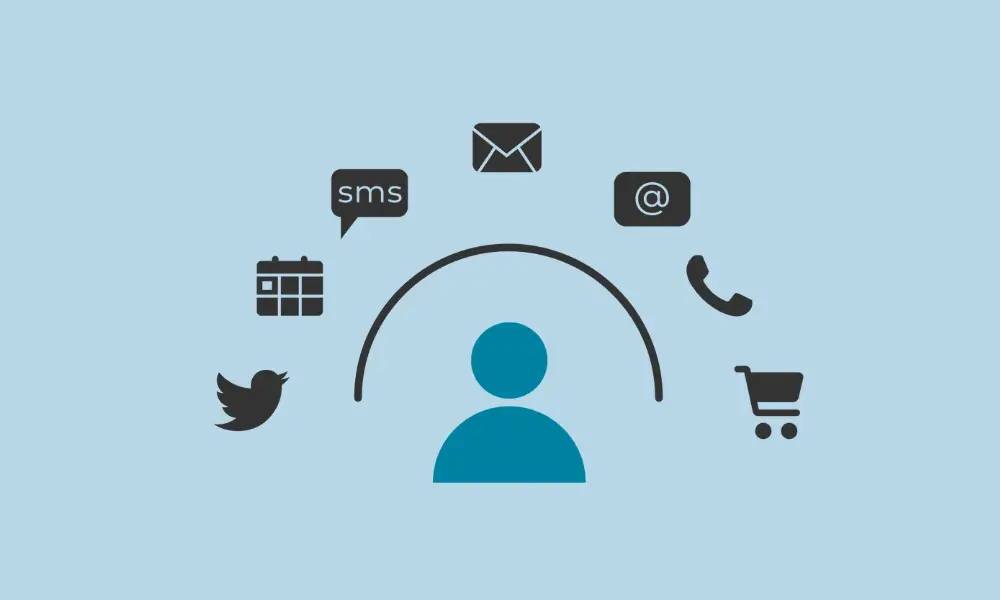
Achieving this level of consistency requires businesses to synchronize data, communication, and operations across all channels. With an omnichannel strategy, companies can ensure that all customer touchpoints are connected, so no matter where or how the customer engages with the brand, the experience feels familiar and cohesive. Ultimately, consistency across channels is the backbone of a successful omnichannel customer experience, setting the stage for deeper engagement and customer loyalty.
Personalization at Every Touchpoint
Personalization is another cornerstone of an effective omnichannel customer experience. In today’s market, customers expect brands to know their preferences, purchase history, and behavior patterns, and to tailor interactions accordingly. By leveraging data gathered from multiple channels, businesses can deliver highly personalized experiences that meet individual customer needs and expectations at every touchpoint.
Personalization in an omnichannel customer experience goes beyond simply using a customer’s name in an email or recommending similar products. It involves creating meaningful interactions based on real-time data and insights. For example, if a customer has previously browsed a product online but did not make a purchase, a personalized follow-up email with a special offer could entice them to complete the transaction. Similarly, in a physical store, sales associates can use customer data from previous online interactions to provide more relevant product suggestions, improving the in-store experience.
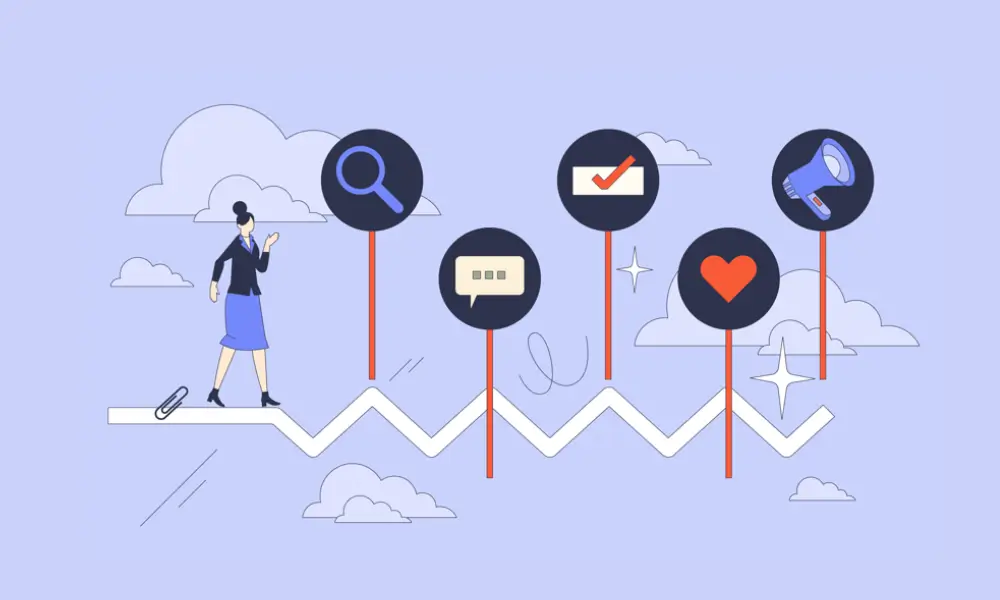
Moreover, personalization is not limited to the buying phase of the customer journey. It extends to post-purchase interactions, such as sending tailored product recommendations, reminders, or support based on past purchases. This level of personalization enhances the overall customer experience by making each interaction feel more relevant and valuable, which in turn fosters stronger relationships and brand loyalty.
When businesses successfully implement personalization at every touchpoint, customers feel recognized and understood, which can significantly increase satisfaction and engagement. As part of a comprehensive omnichannel customer experience, personalization transforms generic interactions into meaningful, customer-centric engagements that drive business success.
Accessibility and Customer Empowerment
The third key component of an omnichannel customer experience is ensuring accessibility and empowering customers to interact with the brand in the ways that are most convenient for them. Modern consumers expect to be able to engage with brands anytime, anywhere, and on any device. Whether they are shopping on their smartphone, browsing on a desktop, or visiting a store, they want the freedom to move between channels effortlessly without losing any continuity in their experience.
Accessibility in the omnichannel context means that all channels should be easy to use, intuitive, and available whenever the customer needs them. This can include providing a mobile-optimized website, user-friendly apps, or enabling real-time support via chat or social media. Additionally, accessibility should extend to customer support and service options, allowing customers to resolve issues, ask questions, or make purchases through whichever platform they prefer.
Empowering customers is also about giving them control over their journey. With an omnichannel customer experience, customers can decide how they want to interact with the brand at any given moment. For instance, a customer might research a product online, make a purchase in-store, and later receive support through a social media channel—all without feeling like they need to start their journey over. By offering this level of flexibility, businesses empower their customers to engage with them on their own terms, creating a sense of autonomy and control that is crucial for customer satisfaction.
Incorporating accessibility and customer empowerment into the omnichannel strategy not only improves the customer experience but also enhances overall brand perception. Customers appreciate brands that allow them to navigate their purchasing journey smoothly and at their own pace. As such, accessibility and empowerment are integral to delivering a high-quality omnichannel customer experience that meets the demands of today’s digitally savvy consumers.
The Role of Data in Omnichannel Customer Experience
The Importance of Data Integration from Various Channels
At the heart of an effective omnichannel customer experience is the integration of data from various customer touchpoints. Modern customers interact with brands across numerous platforms—whether they’re shopping online, browsing through mobile apps, visiting a physical store, or engaging with customer support via social media. Each of these interactions generates valuable data, and the ability to collect, centralize, and analyze this data is what differentiates a seamless omnichannel experience from a fragmented one.
Data integration is essential for creating a unified customer profile. Without a centralized system that pulls data from all channels, businesses risk operating in silos, where each department or platform has access to only a partial view of the customer. This leads to inconsistent customer experiences, as the information from one touchpoint may not be available when the customer engages through another. For example, a customer may add items to their shopping cart on a website, but if that information isn’t available to the mobile app or in-store system, the customer may need to start the process over, leading to frustration.
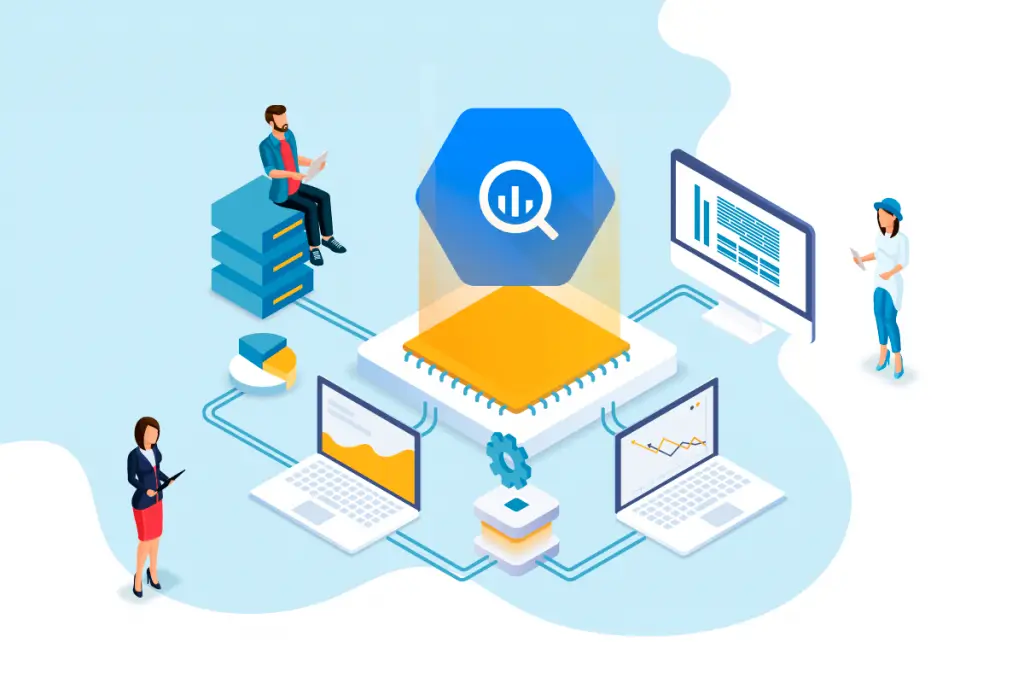
By integrating data from all channels, businesses can create a comprehensive, 360-degree view of each customer. This unified data allows businesses to track customer behavior, preferences, and interactions across all platforms, providing a complete understanding of the customer journey. Data integration also enables real-time updates, so if a customer makes a purchase in-store, that information is instantly reflected in their online profile, ensuring that the experience is consistent no matter where the next interaction takes place.
For businesses, data integration not only improves the omnichannel customer experience but also enhances operational efficiency. With a centralized system, customer service teams, marketing departments, and sales associates can access the same information, reducing redundancy and improving the overall flow of customer interactions. In short, data integration is a critical component of delivering a cohesive, personalized omnichannel customer experience that meets the expectations of today’s consumers.
How Businesses Use Data to Personalize Experiences
One of the key advantages of data integration in an omnichannel customer experience is the ability to personalize interactions across all channels. Personalization has become a significant driver of customer satisfaction and loyalty, as customers now expect businesses to understand their preferences and deliver tailored experiences that resonate with their individual needs.
Businesses use data collected from various channels to create highly personalized experiences. This can range from simple actions like addressing customers by their name in emails to more complex interactions, such as recommending products based on past purchases, browsing behavior, or geographic location. The more data a business has about its customers, the better it can anticipate their needs and provide relevant content, products, and services.
For example, a customer who frequently purchases sportswear online might receive personalized emails featuring the latest athletic gear or notifications about promotions in the nearest physical store. This kind of targeted communication is only possible when businesses integrate data from multiple sources, allowing them to deliver the right message to the right customer at the right time.
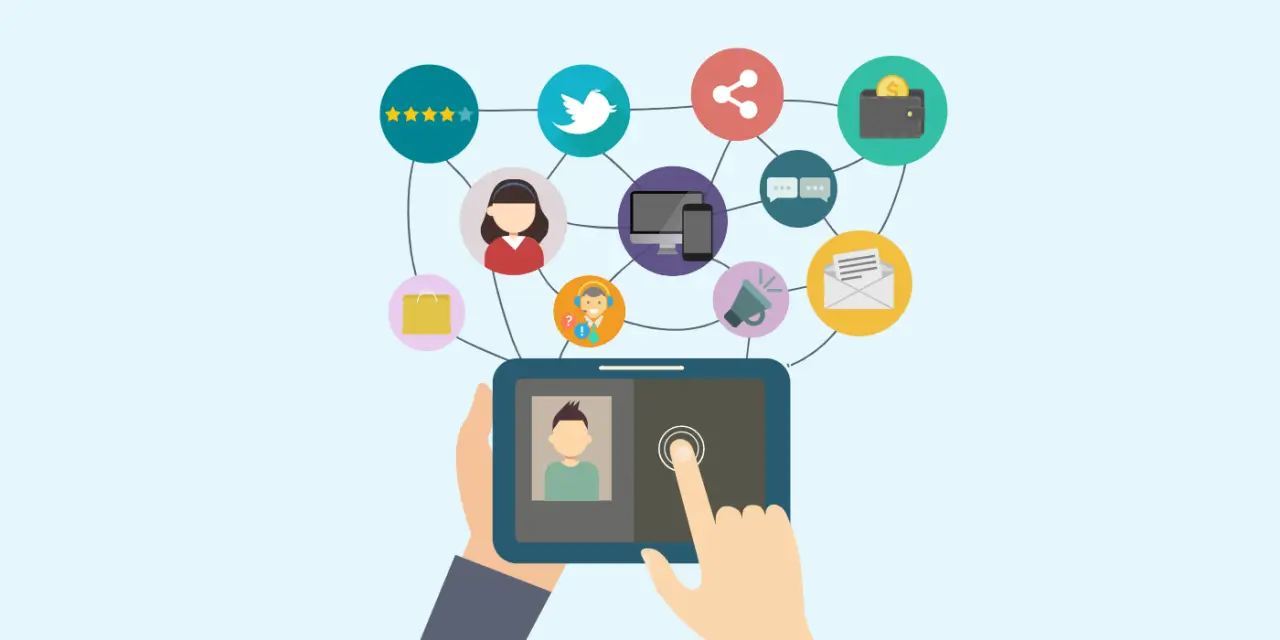
Beyond marketing, data-driven personalization extends to customer service as well. When businesses have access to comprehensive customer profiles, support teams can provide faster, more efficient service. If a customer calls in with an issue, the support representative can quickly access their purchase history, previous interactions, and any open service tickets, allowing them to resolve the problem without asking the customer to repeat themselves. This not only improves the customer’s experience but also reduces the time and effort required to resolve issues, making the entire process smoother.
In addition, businesses can use data to offer personalized shopping experiences across multiple channels. For example, a customer may start browsing products on a brand’s website, add a few items to their cart, and later visit a physical store. If the store associate has access to the customer’s online shopping data, they can provide personalized assistance by helping the customer complete their purchase or suggesting additional products based on their online behavior. This level of personalization is a hallmark of an exceptional omnichannel customer experience, as it ensures continuity and relevance at every stage of the customer journey.
Moreover, predictive analytics, powered by customer data, enables businesses to anticipate future customer behaviors and preferences. By analyzing past interactions and purchase patterns, businesses can make data-driven predictions about what products or services customers may be interested in, when they are likely to make a purchase, or even how they might respond to specific offers. This proactive approach to personalization not only enhances the customer experience but also drives higher conversion rates and customer retention.
The role of data in omnichannel customer experience is indispensable. Data integration from various channels allows businesses to create a unified, consistent experience across all touchpoints, while the effective use of this data enables businesses to deliver highly personalized interactions. As the expectations of modern consumers continue to evolve, businesses that can harness the power of data to personalize and enhance the customer journey will be well-positioned to build long-term loyalty and drive success in the omnichannel landscape.
Benefits of an Omnichannel Customer Experience
Improved Customer Satisfaction
How Seamless Interactions Lead to Happier Customers
A key factor in customer satisfaction is the ease with which customers can navigate their journey across different channels. In a traditional multi-channel environment, customers may face fragmented interactions, where data and context do not carry over from one channel to another. For instance, a customer may research a product online, but when they visit a physical store, the sales associate may have no record of the customer’s previous interactions, leading to a disjointed and frustrating experience.
In contrast, an omnichannel customer experience eliminates these silos by integrating customer data and interactions across all platforms. This ensures that whether a customer starts their journey on a mobile app, continues it on a website, or finalizes it in-store, the experience remains consistent and cohesive. Customers can pick up exactly where they left off, without needing to repeat themselves or re-enter information. This seamless continuity reduces friction in the customer journey, leading to a smoother, more enjoyable experience.

For example, when a customer adds items to their cart on a brand’s website, they expect to find those items in their cart when they open the brand’s mobile app or visit a store. An omnichannel strategy makes this possible by synchronizing data across all platforms in real time. Similarly, customer service interactions are greatly enhanced in an omnichannel system—if a customer calls in for support after having reached out via social media, the service representative will have access to the entire history of interactions, allowing for a more informed and efficient resolution.
This type of frictionless interaction fosters positive customer experiences and helps build long-lasting relationships with brands. Customers feel more understood and appreciated, which translates to higher levels of satisfaction and loyalty. When businesses prioritize customer satisfaction by investing in an omnichannel customer experience, they create a foundation for repeat business, referrals, and positive brand perception.
How Industries Benefited from Omnichannel Customer Experience
The benefits of an omnichannel customer experience are not limited to any one industry. Companies across various sectors, from retail and hospitality to finance and healthcare, have seen significant improvements in customer satisfaction by adopting omnichannel strategies.
In the retail industry, for example, omnichannel customer experience has become a game-changer. Retailers that integrate their online and offline experiences have seen a dramatic increase in customer satisfaction. One of the most impactful ways this manifests is through the buy online, pick up in-store (BOPIS) model, where customers can shop online and collect their purchases at a nearby store. This option offers convenience and flexibility, meeting customers’ growing demands for immediacy. Additionally, retailers that provide consistent pricing, promotions, and inventory across platforms build trust and transparency, further enhancing customer satisfaction.
In the hospitality industry, omnichannel customer experience has revolutionized how businesses engage with guests. Hotels and resorts are now able to offer seamless interactions across booking websites, mobile apps, and in-person services. Guests can check in digitally, receive personalized offers through mobile apps, and easily access customer support at any stage of their journey. This level of convenience and personalization enhances the guest experience, leading to higher satisfaction rates and increased guest loyalty.
The financial services industry has also greatly benefited from implementing an omnichannel customer experience. Banks and financial institutions now provide customers with integrated platforms where they can manage their accounts, seek assistance, and perform transactions through multiple channels—whether in a branch, on a website, or through a mobile app. This streamlined experience reduces wait times and frustration, ensuring that customers can easily access services whenever and however they prefer. The ability to provide personalized financial advice based on customers’ full history across channels has also contributed to improved customer satisfaction and loyalty.
In healthcare, an omnichannel customer experience has transformed patient care and engagement. Patients can now book appointments, access medical records, and consult with healthcare providers through a combination of online portals, mobile apps, and in-person visits. By offering patients a range of touchpoints, healthcare providers make it easier for individuals to manage their health, stay informed, and receive timely care. This flexibility and accessibility significantly contribute to higher patient satisfaction and improved health outcomes.
Ultimately, the industries that have adopted an omnichannel customer experience are seeing measurable improvements in customer satisfaction. The ability to provide seamless, personalized, and accessible interactions is now a key differentiator for businesses looking to stay competitive in today’s market. As consumers increasingly expect frictionless experiences, the brands that embrace omnichannel strategies are best positioned to meet these expectations and build lasting relationships with their customers.
Increased Customer Retention and Loyalty
The Role of Loyalty Programs and Cross-Channel Engagement
Loyalty programs have long been used as an effective tool to retain customers and incentivize repeat business. In the context of an omnichannel customer experience, loyalty programs become even more powerful. By integrating loyalty programs across various channels—whether online, in-store, through mobile apps, or social media—businesses can create a unified experience that rewards customers no matter how they choose to engage.
For instance, a customer who frequently shops both online and in physical stores should be able to earn and redeem loyalty points seamlessly across both channels. If the customer makes a purchase on a website, those points should be instantly available for use in a mobile app or an in-store visit. This level of cross-channel integration enhances the value of loyalty programs, making them more accessible and rewarding for customers. Additionally, customers feel appreciated and valued when their loyalty is recognized consistently, regardless of the channel they use, which increases their likelihood of staying loyal to the brand.

Moreover, omnichannel customer experience allows businesses to personalize loyalty programs based on customer preferences and behavior. By leveraging data collected from various touchpoints, companies can offer tailored rewards, special discounts, or exclusive offers that resonate with individual customers. This personalized approach not only strengthens the appeal of loyalty programs but also drives engagement by showing customers that their loyalty is appreciated in a meaningful way.
Cross-channel engagement also plays a vital role in increasing customer retention and loyalty. An omnichannel customer experience allows customers to interact with a brand across multiple platforms without losing continuity. For example, a customer might start browsing products on a mobile app, add items to their cart, and later complete the purchase in-store. The ability to switch between channels effortlessly while maintaining a consistent experience reinforces customer trust and satisfaction, making it more likely that they will continue to engage with the brand in the future.
When customers feel that a brand understands their preferences and offers convenience through seamless cross-channel engagement, they are more likely to return for future purchases. Furthermore, the more positive and frictionless their experience, the higher their emotional connection to the brand, which fosters loyalty.
How Omnichannel Customer Experience Strengthens the Relationship Between Brands and Customers
The strength of the relationship between a brand and its customers is largely determined by the quality of the customer experience. A well-executed omnichannel customer experience can transform a casual customer into a loyal advocate by consistently delivering value across all channels. By providing a unified experience, brands can build a deeper connection with their customers, ultimately leading to higher retention and stronger loyalty.
One of the ways omnichannel customer experience strengthens relationships is through personalization. When businesses have access to a complete view of their customers—gathered from interactions across online, offline, and mobile platforms—they can deliver more relevant and personalized experiences. For example, if a customer frequently buys certain products, the business can use that information to recommend complementary products, send personalized offers, or provide relevant content. This kind of tailored experience not only makes customers feel valued but also keeps them engaged with the brand over the long term.
In addition, omnichannel customer experience creates a sense of convenience and reliability, which are key factors in building trust. Customers appreciate being able to interact with a brand through multiple channels while enjoying a consistent and cohesive experience. Whether they are shopping in-store, browsing online, or seeking customer support, they know they can expect the same high level of service and product quality. This consistency fosters a sense of trust, as customers feel that the brand is reliable and capable of meeting their needs, regardless of how they choose to engage.
Moreover, the ability to access customer service through multiple touchpoints—whether via social media, live chat, email, or phone—makes customers feel empowered and supported. An omnichannel customer experience ensures that no matter where or how a customer reaches out, they can receive prompt and effective assistance. This level of responsiveness and accessibility builds confidence in the brand and encourages customers to remain loyal.
Another key factor that strengthens the relationship between brands and customers is the ability to create an emotional connection through meaningful interactions. When businesses use omnichannel strategies to deliver personalized, seamless, and engaging experiences, they go beyond transactional relationships and start building emotional bonds with customers. These connections are vital for long-term loyalty, as emotionally connected customers are more likely to make repeat purchases, recommend the brand to others, and become advocates.
An omnichannel customer experience plays a pivotal role in increasing customer retention and loyalty by creating seamless, personalized, and convenient interactions across all channels. Loyalty programs, when integrated into an omnichannel strategy, become even more effective at rewarding and retaining customers. Cross-channel engagement allows customers to interact with brands in a frictionless manner, which builds trust and satisfaction. Ultimately, a well-executed omnichannel customer experience strengthens the relationship between brands and their customers by making every interaction valuable, consistent, and personalized—key ingredients for fostering long-term loyalty.
Higher Conversion Rates and Sales
Cross-Channel Integration Leading to More Sales Opportunities
Cross-channel integration is at the heart of the omnichannel customer experience. When businesses can offer a unified shopping experience across all touchpoints, they enable customers to move fluidly between platforms—whether that’s browsing online, purchasing in-store, or interacting via mobile apps. This integration not only enhances customer satisfaction but also creates numerous opportunities for sales that might otherwise be missed in a disconnected multi-channel system.
In a traditional multi-channel environment, customers may start their journey on one channel, such as browsing a product online, but may be forced to complete their purchase on the same channel or lose track of their progress if they switch to another. This fragmentation can lead to lost sales, as customers may abandon their cart if they cannot easily continue their shopping journey across devices or in a physical store.

An omnichannel customer experience eliminates these barriers by integrating customer data and interactions across all channels. For example, a customer might add items to their cart while shopping on a desktop but later visit a physical store to try the products in person. With cross-channel integration, that customer can seamlessly access their online cart in-store, making it easier to finalize the purchase. This fluidity not only prevents cart abandonment but also increases the likelihood of completing a sale, as the customer’s journey is uninterrupted.
Additionally, omnichannel strategies such as BOPIS or reserve online, try in-store (ROTIS) offer more flexibility to customers and open up new sales opportunities for businesses. BOPIS allows customers to purchase products online and pick them up at a nearby store, offering convenience while driving in-store traffic. Similarly, ROTIS lets customers reserve items online to try in-store, encouraging them to visit physical locations, where they may make additional purchases. These strategies leverage cross-channel integration to increase customer touchpoints and opportunities for conversion.
By providing a seamless shopping experience across online and offline channels, businesses create a consistent and enjoyable customer journey that ultimately boosts sales. Every interaction is connected, allowing customers to engage with the brand in ways that are convenient for them, whether they prefer online shopping, in-store visits, or a combination of both. This level of flexibility and integration maximizes sales opportunities and drives higher conversion rates.
The Power of Retargeting and Follow-Up Strategies in Omnichannel Environments
Retargeting and follow-up strategies are powerful tools in the omnichannel customer experience that help businesses capture potential customers who may not have converted during their initial interaction. These strategies enable brands to remain top-of-mind for customers, encouraging them to return to complete a purchase, engage with new offers, or explore additional products and services.
In an omnichannel environment, retargeting becomes even more effective due to the integrated nature of customer data. Unlike traditional single-channel retargeting campaigns, which may only reach customers through the channel they originally engaged with, an omnichannel customer experience allows businesses to retarget customers across multiple platforms. For instance, if a customer browses products on a brand’s website but doesn’t complete the purchase, retargeting ads can be displayed on social media, through email, or even via personalized recommendations on the brand’s mobile app.
This cross-channel retargeting approach increases the likelihood of converting customers who may have been undecided or distracted during their initial interaction. By reaching customers wherever they are—whether they are checking their social media feed, opening an email, or browsing through an app—brands can remind them of products they showed interest in and encourage them to return and complete the purchase. Omnichannel retargeting ensures that customers are consistently engaged with the brand, regardless of which channel they use.
Follow-up strategies also play a crucial role in driving conversions and sales in an omnichannel customer experience. After a customer has interacted with a brand—whether through a purchase, abandoned cart, or customer service inquiry—timely and relevant follow-up communications can make a significant difference in securing the sale or enhancing customer loyalty. For example, if a customer abandons their shopping cart, an automated follow-up email or app notification can be sent, offering a reminder or even a discount to incentivize them to complete the purchase.
In an omnichannel environment, follow-up communications can be tailored based on the customer’s journey across various channels. If a customer has viewed certain products online, the follow-up can include personalized product recommendations or restock alerts, increasing the chances of converting that customer into a buyer. Additionally, businesses can use post-purchase follow-ups to encourage future sales by offering special promotions, loyalty points, or product recommendations based on the customer’s previous purchases.
The key advantage of follow-up strategies in an omnichannel customer experience is their ability to provide relevant, personalized communications across different touchpoints. Whether it’s through email, push notifications, or retargeting ads, follow-ups keep the brand top-of-mind and help guide customers toward making a purchase. Moreover, by using customer data collected from multiple channels, businesses can craft more targeted and impactful follow-ups, resulting in higher conversion rates and increased sales.
Enhanced Brand Image and Trust
Creating Consistent and Reliable Brand Experiences Across Channels
One of the primary benefits of an omnichannel customer experience is the ability to create a consistent and reliable brand presence across all channels. In a world where consumers interact with businesses through multiple platforms—such as websites, social media, mobile apps, and physical stores—ensuring a unified brand message is critical. Inconsistent branding or disconnected customer experiences can confuse customers, leading to dissatisfaction and a weakened brand image.
An omnichannel customer experience solves this challenge by harmonizing interactions across channels. Whether a customer is engaging with a brand’s website, receiving an email campaign, or visiting a retail location, they should experience the same level of service, the same messaging, and the same visual identity. This cohesion is essential in building a reliable and trustworthy brand image, as it shows that the business values its customers’ time and ensures consistency no matter how or where they engage.
For example, a customer may begin their shopping journey by browsing a product online, then visit the store to see the product in person, and finally make the purchase through a mobile app. In an omnichannel customer experience, the customer’s preferences, cart items, and product history are preserved across each of these touchpoints, creating a smooth and unified experience. The customer doesn’t have to repeat their search, re-enter information, or deal with discrepancies in pricing or promotions. By ensuring consistency across all interactions, the business reinforces its reliability, which, in turn, enhances the customer’s perception of the brand.

A consistent omnichannel customer experience also extends beyond shopping transactions. Whether it’s customer support, product returns, or loyalty programs, every part of the customer journey should feel interconnected and harmonious. For instance, if a customer seeks help with a product they purchased online, the brand’s customer support team should have immediate access to the customer’s purchase history and previous interactions, regardless of the channel through which they were made. This ability to provide personalized, reliable support strengthens trust and makes the customer feel valued.
By creating consistent experiences across every channel, businesses establish a reliable brand presence that is easy to recognize and trust. This level of reliability is especially important in today’s fast-paced, digital-first world, where customers expect quick, seamless service at every turn. An omnichannel customer experience not only meets these expectations but also positions the brand as dependable and customer-focused, which goes a long way in building loyalty and positive brand associations.
The Impact of a Cohesive Customer Experience on Brand Perception
A cohesive omnichannel customer experience does more than just improve day-to-day interactions—it has a lasting impact on brand perception. In a market where consumers have numerous choices, a positive brand image can make the difference between a one-time customer and a loyal brand advocate. Delivering a cohesive experience across all touchpoints allows businesses to create deeper emotional connections with their customers, ultimately shaping how the brand is perceived.
When customers encounter seamless and personalized interactions across channels, they are more likely to develop a favorable impression of the brand. They appreciate that their preferences and history are acknowledged, no matter where or how they engage. This personalized experience fosters a sense of care and attentiveness, helping customers feel like more than just another transaction. The result is a positive brand image that highlights the business’s commitment to delivering value and understanding its customers’ needs.
Furthermore, a cohesive omnichannel customer experience also helps to reinforce a brand’s values and messaging. Consistent branding and messaging across all platforms ensure that customers have a clear understanding of what the brand stands for. Whether it’s promoting sustainability, quality, or customer service excellence, businesses can use their omnichannel presence to communicate their core values in a way that resonates with customers. The more consistent and clear a brand’s messaging is, the more likely customers are to align with those values and choose the brand over competitors.
Additionally, an omnichannel customer experience builds trust by eliminating potential frustrations or friction points. A disconnected experience—where customers face different pricing structures, disjointed service, or incomplete information across channels—can lead to confusion and dissatisfaction. This kind of inconsistency damages trust and makes customers question the brand’s reliability. Conversely, when a brand consistently delivers on its promises across all channels, customers come to view it as dependable, trustworthy, and worth their continued investment.
For example, consider how a customer perceives a brand that offers the same promotions and availability of products online as it does in-store. If a product is featured in an email newsletter and the customer walks into the store expecting to find it, only to discover it is unavailable or priced differently, their perception of the brand may take a hit. An omnichannel customer experience ensures that all channels are aligned, preventing such discrepancies and building confidence in the brand’s reliability.
Trust is the foundation of customer loyalty, and an omnichannel customer experience strengthens this foundation by ensuring that every interaction is consistent, personalized, and reliable. Customers are more likely to recommend a brand to others, make repeat purchases, and remain loyal when they feel confident that the brand will consistently meet their needs, regardless of the platform or context. This kind of loyalty is invaluable in today’s competitive marketplace, where a single negative experience can lead customers to switch to a competitor.
Key Challenges in Implementing Omnichannel Customer Experience
Data Integration and Management
Challenges in Centralizing Data from Multiple Platforms
The most pressing challenge in achieving a true omnichannel customer experience is the difficulty of centralizing data from multiple platforms. Each touchpoint—whether it be a website, in-store POS system, mobile app, or call center—often operates independently, generating its own set of data. This fragmentation can lead to disconnected customer profiles, where information gathered in one channel may not be available or accessible in another. For example, a customer may make a purchase through a brand’s mobile app, but when they reach out to customer service, the representative may have no record of their previous transactions because the systems are not integrated.
This lack of data centralization creates inconsistencies in customer interactions, which can frustrate customers and reduce their satisfaction. Customers expect businesses to remember their preferences and transaction history, no matter which platform they use to engage. When they encounter disjointed experiences, such as having to provide the same information multiple times across different channels, it erodes their trust in the brand and diminishes the seamless experience that an omnichannel strategy promises.
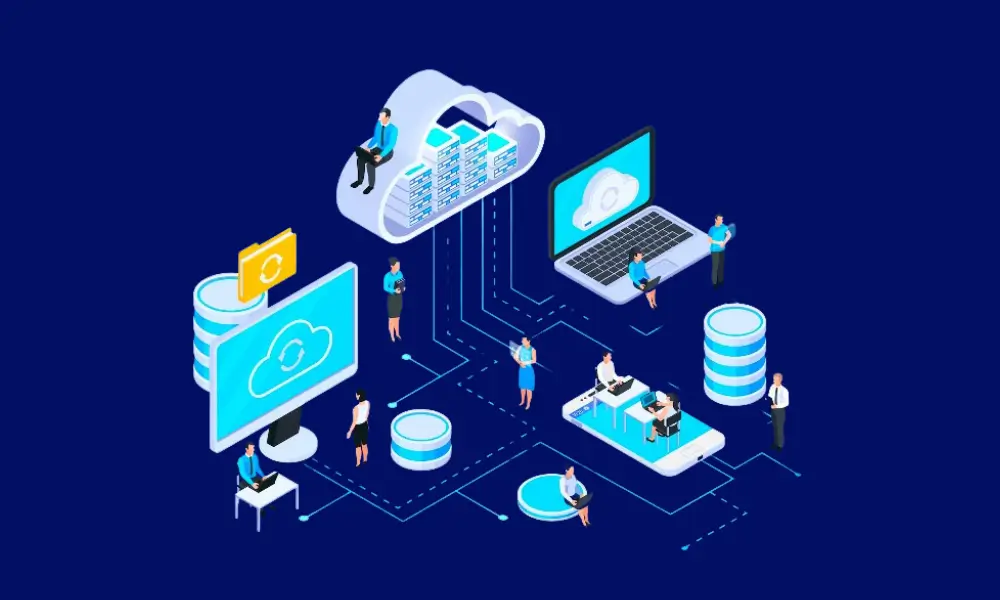
Another challenge in data integration stems from the fact that many businesses use different software and systems for each platform. For example, a company may use a particular CRM system for online sales, a separate POS system for in-store purchases, and yet another tool for managing social media interactions. These systems often don’t communicate with one another effectively, making it difficult to create a unified view of the customer. This siloed data can lead to duplicated or outdated customer information, making it challenging to deliver personalized and relevant experiences across channels.
Data security and privacy concerns also add a layer of complexity to data integration efforts. With an increasing focus on data protection regulations, such as GDPR or CCPA, businesses must ensure that they handle customer data responsibly and maintain compliance across all channels. Centralizing data from multiple platforms requires businesses to put robust security measures in place to protect sensitive information, while still allowing for the seamless flow of data between systems.
Solutions for Data Fragmentation and Siloed Systems
While the challenges of data integration and management in an omnichannel customer experience can be significant, they are not insurmountable. Businesses can take several steps to overcome data fragmentation and siloed systems to achieve a more cohesive and seamless customer journey.
- Adopting a Unified Data Platform:
One of the most effective solutions for addressing data fragmentation is the implementation of a unified data platform. This type of platform centralizes data from various channels into a single system, creating a 360-degree view of each customer. A unified platform enables businesses to collect and analyze data from multiple touchpoints in real-time, ensuring that all customer interactions, regardless of the channel, are linked to a single customer profile.
With a unified data platform, businesses can synchronize customer data across all channels—whether that’s online, offline, or mobile. This not only improves the customer experience by ensuring that their preferences and history are available at every touchpoint but also allows businesses to make more informed decisions based on comprehensive insights. Many businesses are turning to customer data platforms (CDPs) and integrated CRM systems as a solution to data fragmentation. These platforms are designed to break down data silos and provide a centralized hub for all customer data, enabling more accurate personalization and engagement strategies.
- Implementing Middleware Solutions for Data Integration:
In cases where adopting a new unified platform is not feasible, businesses can turn to middleware solutions to integrate their existing systems. Middleware acts as a bridge between different platforms, enabling them to communicate and share data without requiring a complete overhaul of the existing infrastructure. By connecting previously siloed systems, middleware can help businesses create a more seamless and integrated omnichannel customer experience without the need to replace all their current software solutions.
For instance, middleware solutions can link an eCommerce platform with an in-store POS system or sync customer data between a CRM and marketing automation tool. This allows businesses to centralize customer data and eliminate gaps in the customer journey, ensuring that all channels have access to the most up-to-date and accurate information.
- Leveraging APIs for Cross-Platform Communication:
Another powerful tool for data integration in an omnichannel customer experience is the use of application programming interfaces (APIs). APIs allow different systems to communicate and exchange data in real-time, enabling a more seamless flow of information between platforms. For example, APIs can connect a brand’s website, mobile app, and in-store systems, allowing data such as shopping cart contents, purchase history, and loyalty points to be synchronized across all touchpoints.
By leveraging APIs, businesses can ensure that their customers receive consistent, personalized experiences regardless of where they engage. APIs are also a flexible solution that can be scaled as businesses grow, making them an ideal option for companies looking to enhance their data integration capabilities without committing to a full system overhaul.
- Investing in Data Governance and Security Measures
As businesses work to centralize their data, it’s crucial to establish strong data governance policies to ensure the responsible use of customer information. Data governance involves creating clear guidelines on how data is collected, stored, and accessed, as well as implementing security measures to protect sensitive information. By investing in data encryption, user access controls, and regular audits, businesses can mitigate the risks associated with data breaches and ensure compliance with data privacy regulations.
A well-governed data strategy not only protects customer information but also builds trust with customers, who are more likely to engage with brands that prioritize data security. This trust is especially important in an omnichannel customer experience, where data is shared across multiple touchpoints and platforms.
Data integration and management present significant challenges for businesses aiming to deliver a seamless omnichannel customer experience. Centralizing data from multiple platforms, managing fragmented systems, and ensuring data security are complex tasks that require strategic solutions. However, by adopting unified data platforms, implementing middleware solutions, leveraging APIs, and investing in strong data governance, businesses can overcome these challenges and create a more cohesive, personalized, and efficient customer journey.
Maintaining Consistency Across Touchpoints
The Difficulty of Providing Consistent Messaging Across Platforms
One of the key challenges in delivering an omnichannel customer experience is ensuring that the brand’s messaging remains consistent across different platforms. In a multi-channel environment, each channel—such as eCommerce websites, mobile apps, social media, and in-store interactions—often operates in isolation, with its own set of marketing strategies, customer service practices, and content. This fragmentation can lead to inconsistencies in how the brand is presented to customers, causing confusion and undermining trust.
For instance, a customer may see a promotion on a brand’s social media page, but when they visit the website or physical store, the promotion may not be available or may differ in terms of pricing or details. Similarly, different platforms may provide conflicting information about products, services, or company policies, leaving customers frustrated and less likely to engage with the brand in the future. Inconsistent messaging can also negatively impact a brand’s credibility, as customers expect clear, reliable communication regardless of where they interact with a business.
Additionally, businesses often struggle to maintain consistency in tone and voice across platforms. For example, the casual, engaging style of social media posts might not match the more formal tone used in email marketing or customer support interactions. These discrepancies can make the brand feel disjointed and inconsistent, reducing the overall effectiveness of the omnichannel customer experience.
As businesses scale, the complexity of maintaining consistency across touchpoints increases. Different teams may be responsible for managing various channels, from digital marketing to customer service, and each team may have different priorities and objectives. Without a clear strategy for alignment, this siloed approach can lead to fragmented messaging that disrupts the customer experience.
How to Ensure Uniformity in Customer Service and Communication
While maintaining consistency across touchpoints is challenging, it is crucial for delivering a seamless omnichannel customer experience. Consistency not only builds trust and credibility with customers but also creates a more cohesive brand image that customers can easily recognize and engage with. To overcome the challenges of fragmented messaging and customer service, businesses must implement strategies that ensure uniformity across all channels.
- Establishing a Centralized Brand Guideline:
A key step in maintaining consistency across touchpoints is to establish a comprehensive and centralized brand guideline. This guideline should cover all aspects of the brand’s messaging, including tone of voice, visual identity, core values, and communication style. By having a well-documented and accessible brand guideline, businesses can ensure that all teams—whether they are managing the website, handling social media, or providing customer support—are aligned in their approach to communication.
The brand guideline should also include specific instructions for how to adapt messaging to different channels without compromising the brand’s overall consistency. For example, while the tone used on social media might be more informal and conversational, the core message should remain consistent with that used in email marketing or website content. This ensures that the brand’s identity remains cohesive, regardless of the platform.
To reinforce adherence to the brand guideline, businesses can provide training for employees who interact with customers across various touchpoints. This ensures that everyone involved in customer communication understands the importance of consistency and knows how to implement it in their respective roles. Regular audits of customer interactions can also help identify any inconsistencies and provide opportunities for improvement.
- Implementing Unified Communication Tools:
Another effective way to ensure uniformity in customer service and communication is by implementing unified communication tools that connect all customer touchpoints. An omnichannel customer experience relies on real-time data sharing between platforms, which allows businesses to maintain a consistent flow of information and avoid discrepancies.

For instance, customer relationship management (CRM) systems that centralize customer data across platforms can provide teams with a unified view of each customer’s interactions and preferences. This ensures that customer service representatives, whether they are assisting via phone, email, or social media, have access to the same information and can provide a consistent level of service. CRM systems can also be integrated with marketing automation tools, ensuring that personalized marketing messages are consistent with customer preferences and previous interactions.
Unified communication tools also enable businesses to synchronize messaging across platforms. For example, if a brand launches a promotion, the same offer can be pushed to the website, mobile app, social media, and email newsletters simultaneously. This prevents confusion and ensures that customers receive the same message regardless of where they encounter the brand.
- Personalization with Consistency:
One of the hallmarks of an effective omnichannel customer experience is the ability to deliver personalized interactions while maintaining consistency. Personalization helps brands connect with customers on a deeper level by tailoring messages and experiences to their individual preferences and behaviors. However, personalization must be executed in a way that aligns with the brand’s overall messaging and service standards.
To achieve this balance, businesses should leverage data from various touchpoints to personalize interactions while staying consistent in how they address customer needs. For example, personalized recommendations on an eCommerce website should be based on the same data that informs product suggestions in email marketing campaigns or mobile app notifications. By ensuring that personalization is rooted in a unified data source, businesses can provide consistent, relevant experiences across all channels.
Additionally, customer service teams can use personalization to enhance the consistency of their interactions. For instance, when a customer contacts support, representatives can use CRM data to provide personalized responses based on the customer’s previous interactions with the brand. This not only improves the quality of service but also reinforces the consistency of the brand’s commitment to meeting customer needs.
- Cross-Departmental Collaboration:
Maintaining consistency in an omnichannel customer experience requires strong collaboration between different teams within the organization. Marketing, sales, customer service, and IT departments all play a role in ensuring that the customer journey is seamless and cohesive. By breaking down silos and fostering cross-departmental collaboration, businesses can ensure that all teams are working toward the same goals and delivering a unified experience.
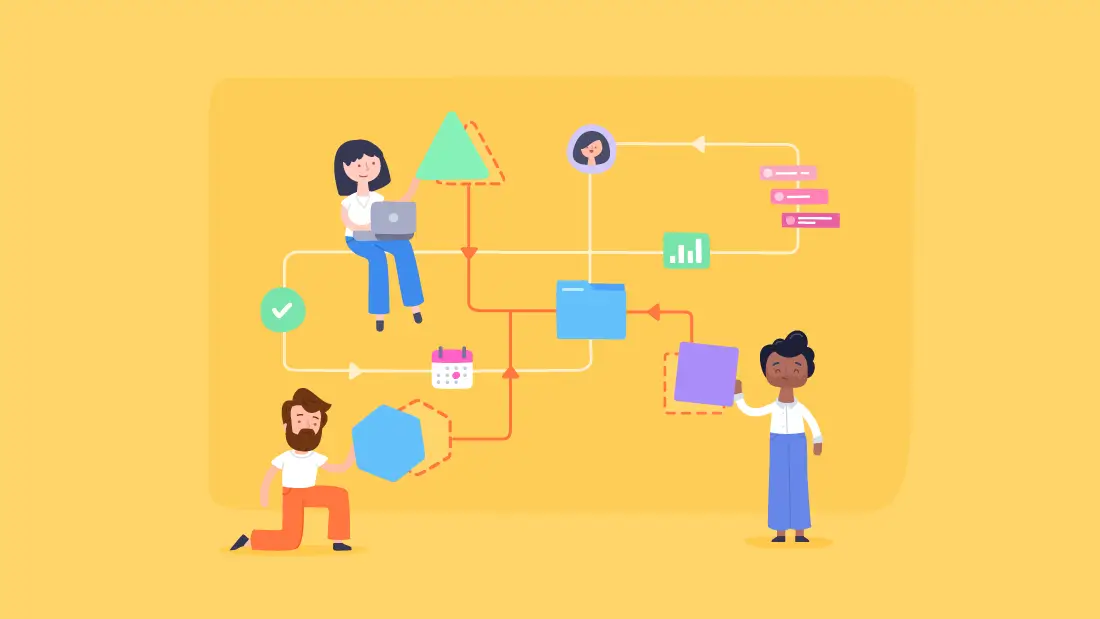
One way to facilitate collaboration is by creating cross-functional teams that focus specifically on the omnichannel customer experience. These teams can coordinate efforts to ensure that promotions, customer service protocols, and messaging strategies are consistent across all touchpoints. Regular meetings between departments can also help identify any gaps or inconsistencies in the customer journey and provide opportunities for improvement.
Maintaining consistency across touchpoints is a major challenge in implementing an omnichannel customer experience, but it is essential for building trust and delivering a seamless customer journey. By establishing a centralized brand guideline, using unified communication tools, personalizing interactions with consistency, and fostering cross-departmental collaboration, businesses can ensure that their messaging and customer service remain uniform across all platforms.
Personalization at Scale
The Challenge of Scaling Personalized Experiences
Personalization is relatively straightforward when dealing with a small group of customers, where businesses can manually tailor interactions based on customer data. However, scaling these personalized experiences to thousands or millions of customers, each interacting with the brand through different platforms and channels, introduces significant complexity. Delivering personalized content, product recommendations, or customer service to such a large audience without sacrificing quality requires sophisticated technology and strategic planning.
One of the main challenges in scaling personalization within an omnichannel customer experience is the sheer volume of data generated by customers across various touchpoints. From browsing history and social media interactions to in-store purchases and customer service inquiries, every action generates data that could be used to personalize the customer experience. The challenge lies in efficiently capturing, analyzing, and acting on this vast amount of information in real-time, across multiple platforms.

Another challenge is ensuring consistency in personalized experiences across all channels. For example, a customer may receive personalized product recommendations via email based on their past purchases, but when they visit the brand’s mobile app, they may see generic offers instead of tailored suggestions. This kind of inconsistency can frustrate customers and weaken the brand’s omnichannel customer experience. Ensuring that personalization is applied uniformly across all platforms, while still being relevant and meaningful, is crucial for maintaining customer engagement.
The complexity of customer journeys also adds to the difficulty of scaling personalization. In an omnichannel environment, customers interact with brands through various touchpoints in non-linear and unpredictable ways. For instance, a customer may start their journey by researching products on a website, then later visit a physical store before completing their purchase through a mobile app. Businesses must be able to track and understand these journeys to provide relevant, personalized experiences at each stage. This requires seamless data integration and the ability to act on that data in real-time, a challenge that many businesses struggle to overcome.
Moreover, personalization at scale demands that businesses not only provide individualized content but also do so in a way that is timely and contextually relevant. Customers expect personalized experiences that adapt to their needs in real-time. For instance, a shopper browsing for winter jackets should not receive personalized emails promoting summer dresses, even if they purchased summer dresses in the past. Businesses need to analyze current customer behavior and adjust their personalization strategies on the fly, ensuring that content is both timely and contextually appropriate.
Tools and Strategies for Automating Personalization
Given the complexities involved in scaling personalization, automation plays a vital role in delivering tailored experiences within an omnichannel customer experience. Automation tools allow businesses to collect and analyze data at scale, enabling them to personalize interactions in real-time without relying on manual intervention. Below are several tools and strategies businesses can use to automate and optimize personalization across all customer touchpoints.
- Customer Data Platforms (CDPs):
One of the most effective tools for automating personalization in an omnichannel customer experience is a CDP. A CDP aggregates customer data from all channels—both online and offline—into a unified customer profile. This centralized data source allows businesses to track customer interactions in real-time, providing a 360-degree view of each customer’s behavior, preferences, and transaction history.
By using a CDP, businesses can automate personalized interactions across every touchpoint. For example, a CDP can trigger personalized email campaigns based on a customer’s browsing history or automatically display tailored product recommendations on a website based on past purchases. The key advantage of a CDP is that it enables businesses to deliver consistent and relevant personalization across all platforms, ensuring that customers receive the right message at the right time, no matter where they interact with the brand.
Additionally, CDPs offer real-time data processing capabilities, allowing businesses to act on customer data immediately. This means that businesses can personalize interactions as they happen, such as offering a discount to a customer who has just abandoned their shopping cart or suggesting complementary products during the checkout process. By automating these actions, businesses can scale their personalization efforts without sacrificing quality or relevance.
- Machine Learning and AI-Powered Personalization
Machine learning and AI are powerful tools for scaling personalization within an omnichannel customer experience. These technologies allow businesses to analyze vast amounts of customer data quickly and accurately, identifying patterns and trends that can be used to personalize interactions at scale.
AI-powered recommendation engines, for example, can automatically generate personalized product suggestions based on a customer’s browsing history, purchase behavior, and preferences. These engines can continuously refine their recommendations as they gather more data, ensuring that the suggestions become more relevant over time. This level of personalization is impossible to achieve manually, but with AI and machine learning, businesses can provide personalized experiences to millions of customers simultaneously.
Moreover, AI can be used to automate customer segmentation, allowing businesses to group customers based on shared behaviors or preferences and deliver personalized content to each segment. For example, AI can analyze customer data to identify high-value customers who frequently make large purchases, enabling businesses to target these customers with personalized offers or loyalty rewards. Similarly, AI can help identify customers who are at risk of churn and automatically trigger retention campaigns to re-engage them.
Natural language processing (NLP), a branch of AI, can also enhance personalization in customer service interactions. Chatbots and virtual assistants powered by NLP can engage with customers in real-time, answering questions, providing personalized recommendations, and even processing transactions. These AI-powered tools can scale personalized customer service across multiple platforms, ensuring that customers receive prompt, relevant support no matter how they choose to engage with the brand.
- Marketing Automation Tools
Marketing automation platforms are essential for scaling personalized marketing efforts across various channels. These tools enable businesses to automate the delivery of personalized content based on predefined customer triggers, such as website visits, email opens, or abandoned carts. For example, a customer who leaves an item in their online shopping cart can automatically receive a follow-up email with personalized product recommendations or a discount to encourage them to complete the purchase.

Marketing automation tools also allow businesses to create dynamic email campaigns that adapt to customer behavior in real-time. Instead of sending generic emails to all customers, businesses can tailor their messaging to reflect each customer’s interests and interactions. This could include personalized product recommendations, reminders about past purchases, or special offers based on the customer’s browsing history.
By automating these personalized marketing efforts, businesses can scale their communication without overwhelming their teams with manual tasks. Automation ensures that each customer receives timely, relevant content, even as the customer base grows and interactions become more complex.
- Personalization at the Omnichannel Level
To ensure that personalized experiences are consistent across all channels, businesses must integrate their personalization strategies across the entire omnichannel customer experience. This involves using tools like CDPs, AI-powered recommendation engines, and marketing automation platforms in a coordinated way to deliver consistent messaging and personalization at every touchpoint.
For example, if a customer browses products on a website, the personalization system should be able to deliver personalized product recommendations when that customer later visits a physical store or opens the brand’s mobile app. Similarly, personalized email campaigns should be aligned with the customer’s interactions across other platforms, ensuring that all channels reflect the customer’s preferences and recent activity.
By taking a holistic approach to personalization, businesses can ensure that customers receive a seamless and consistent experience, regardless of how they interact with the brand. This level of integration is critical for maintaining customer engagement and building loyalty in an omnichannel environment.
Scaling personalized experiences within an omnichannel customer experience is no small feat, but with the right tools and strategies, businesses can meet the challenge. As customers increasingly expect tailored experiences at every touchpoint, the ability to scale personalization effectively is key to creating a truly seamless and engaging omnichannel customer experience.
Managing Customer Expectations
How Customer Expectations Vary Across Different Channels
In an omnichannel customer experience, customers interact with brands across a wide range of platforms, each with its own unique features, limitations, and customer behaviors. As a result, customer expectations tend to shift depending on the channel they are using. Understanding these varying expectations is crucial for businesses aiming to deliver a seamless and consistent experience.
For example, customers engaging with a brand via a mobile app typically expect speed, convenience, and ease of use. They want to complete tasks quickly, whether it’s making a purchase, checking the status of an order, or contacting customer support. Mobile apps are often used on the go, so any delays, complex navigation, or cluttered interfaces can lead to frustration. Customers expect a streamlined, intuitive interface that allows them to achieve their goals with minimal effort.

On the other hand, customers shopping in a physical store may expect a more personalized and tactile experience. They may want assistance from knowledgeable sales associates, the ability to interact with products, or personalized recommendations based on their preferences. The face-to-face interaction in brick-and-mortar stores creates an expectation for high-touch, immediate support that differs from the self-service options typically found online.
Similarly, expectations on social media can be entirely different. Many customers turn to social platforms for quick engagement, whether it’s resolving customer service issues or learning more about products and promotions. Social media is seen as a more casual, real-time channel, and customers often expect rapid responses, even outside traditional business hours. Delays in responding to social media inquiries can result in dissatisfaction, as customers are used to the immediacy of this platform.
Email, another common touchpoint in an omnichannel customer experience, often carries a different set of expectations. Customers may anticipate personalized offers or follow-ups based on their interactions with the brand. However, they generally don’t expect instant responses or real-time engagement in this medium. While they expect timely replies to inquiries, the immediacy associated with social media or live chat is often absent in email communication.
Balancing these differing expectations across platforms can be challenging for businesses. What works on one channel may not necessarily translate to another, and the risk of misalignment or inconsistency increases as more channels are added to the customer journey. Delivering a unified and satisfying omnichannel customer experience requires understanding these nuanced differences in expectations and adapting strategies accordingly.
Balancing Real-Time Engagement with Resource Constraints
One of the most significant challenges businesses face in an omnichannel customer experience is meeting the demand for real-time engagement, especially as customer expectations for immediacy continue to rise. From live chat to social media inquiries, customers increasingly expect brands to respond promptly and resolve issues in real time. However, providing this level of responsiveness across multiple channels, 24/7, can be resource-intensive and difficult to sustain, particularly for businesses with limited staffing or budget constraints.
The rise of real-time engagement tools, such as live chat, chatbots, and social media messaging, has made it easier for customers to reach out to brands. However, it has also created an expectation for instant replies. Customers who encounter delays in response times, even on traditionally slower channels such as email, may become frustrated and dissatisfied, leading to negative brand perception. While providing real-time engagement is essential for meeting customer expectations, it is often resource-heavy, requiring dedicated staff, advanced technology, and well-orchestrated workflows to ensure that customer inquiries are addressed without delay.
Balancing this need for real-time engagement with available resources requires a strategic approach. One solution is to leverage automation tools to fill the gap between customer demand and resource limitations. For example, chatbots can be deployed on websites or mobile apps to handle routine customer inquiries, such as answering frequently asked questions, providing order status updates, or helping customers navigate the purchasing process. Chatbots are available 24/7 and can manage multiple conversations simultaneously, offering a cost-effective way to meet customers’ real-time engagement expectations without overextending human resources.
However, while automation can help manage the demand for real-time engagement, it’s essential to find a balance between automation and human interaction. Not all customer inquiries can or should be handled by chatbots or automated systems. Complex issues, personalized recommendations, or escalated customer service requests often require the attention of a live representative. Therefore, businesses must develop clear escalation protocols that route more complicated inquiries to human agents while allowing automated systems to handle routine requests. This ensures that customers receive the appropriate level of support, regardless of their needs or the channel they use.
Another strategy for balancing real-time engagement with resource constraints is prioritization. Businesses can categorize customer inquiries based on urgency, allowing them to respond to the most critical issues first while less urgent requests are addressed later. For example, a customer with a billing issue or an order discrepancy may require immediate attention, while a general product inquiry can be handled with a longer response time. Prioritization can help manage the workload more effectively, ensuring that customers receive timely assistance without overwhelming available resources.
Additionally, businesses can manage customer expectations by setting clear communication guidelines. For instance, brands can inform customers of expected response times for each channel. While customers may expect immediate responses on live chat or social media, they may be more willing to accept slightly longer wait times for email inquiries if expectations are set appropriately. Providing customers with transparent information about when they can expect a response helps manage their expectations and reduces frustration when delays occur.
Finally, outsourcing customer service or implementing a follow the sun model, where teams in different time zones handle customer inquiries around the clock, can help businesses maintain real-time engagement without overstretching internal resources. Outsourcing allows businesses to provide 24/7 support while keeping costs manageable, and the follow-the-sun model ensures that there is always coverage for customer inquiries, no matter the time of day.
Key Elements of a Successful Omnichannel CX Strategy
Seamless Integration of Online and Offline Channels
Blending eCommerce with in-store experiences
The line between online and offline shopping has become increasingly blurred in today’s retail landscape. Customers no longer distinguish between digital and physical experiences; instead, they expect a cohesive journey where they can switch between channels effortlessly. This blending of eCommerce with in-store experiences is a hallmark of a successful omnichannel customer experience. Whether customers begin their journey by browsing products online and then visit a physical store, or they start in-store and complete their purchase via a mobile app, they want the process to feel unified and consistent.
Blending eCommerce with in-store experiences means more than simply offering the same products in both environments. It involves creating a connected, consistent experience where customers can interact with the brand on their own terms, using the channel that best suits their needs at any given moment. For example, a customer might research a product on a brand’s website, check for its availability at a nearby store, and then visit the store to see the item in person before completing the purchase online later that day. In this scenario, the brand must ensure that inventory, pricing, and customer data are synchronized across channels to avoid frustrating the customer with inconsistent information.
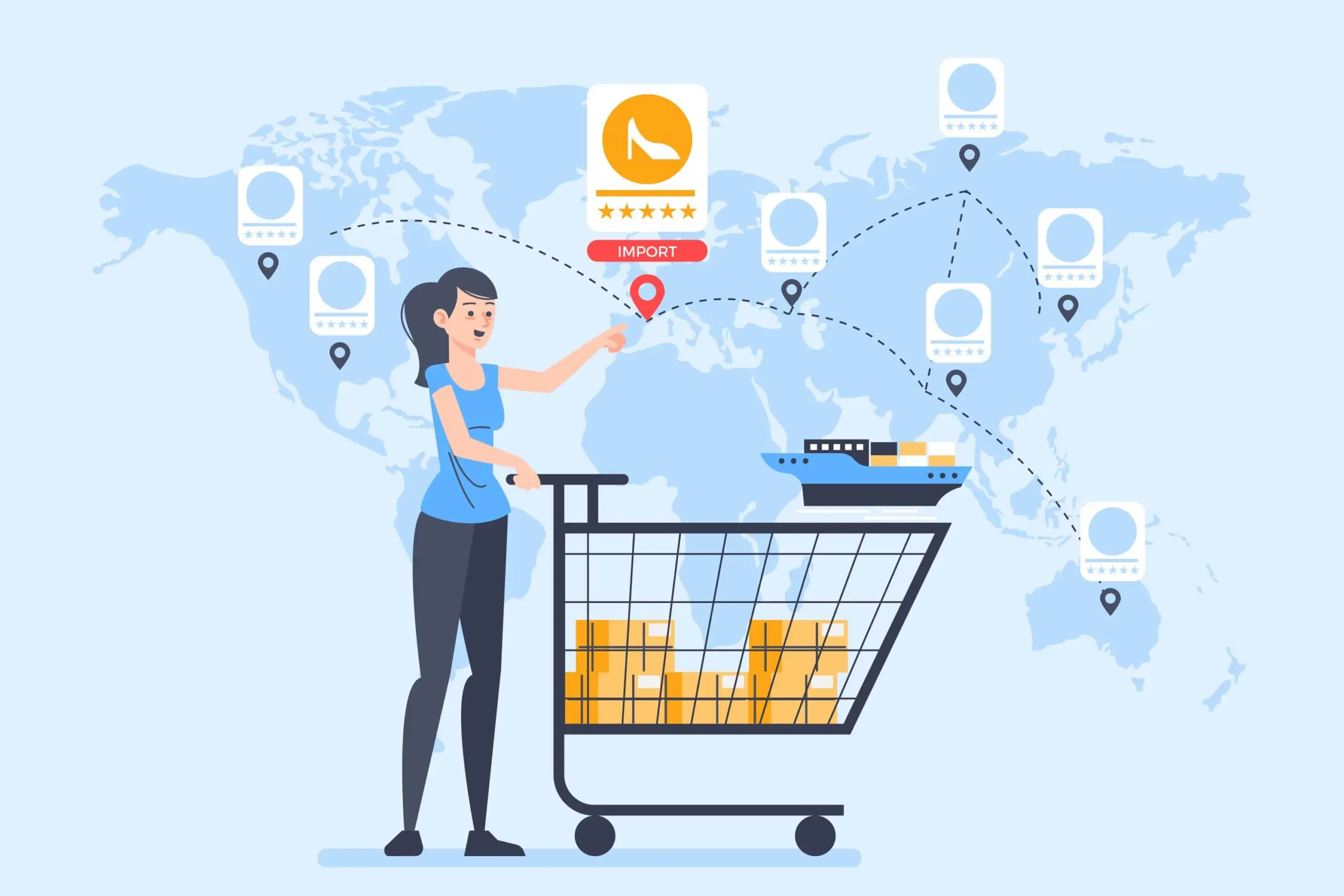
A seamless omnichannel customer experience also enables customers to move between online and offline environments without interruption. For instance, the popular buy online, pick up in-store (BOPIS) model exemplifies the blending of eCommerce with in-store experiences. Customers can browse products online, make a purchase, and then pick up their order at a nearby store, often on the same day. This convenience provides customers with the flexibility they desire, while also driving foot traffic to physical stores. It is a perfect example of how the integration of online and offline channels can enhance the overall customer experience.
Techniques for Achieving Smooth Integration
While blending eCommerce with in-store experiences is essential for a successful omnichannel customer experience, achieving smooth integration requires thoughtful planning and execution. Below are several key techniques that businesses can use to ensure seamless integration between their online and offline channels.
- Real-Time Inventory Synchronization:
One of the most significant challenges businesses face when integrating online and offline channels is ensuring that inventory data is up-to-date and accurate across platforms. Customers expect to see real-time availability when browsing products online, and they may become frustrated if they visit a physical store only to find that the product they saw online is out of stock. To avoid this, businesses need to implement real-time inventory synchronization, where data is consistently updated across all channels.
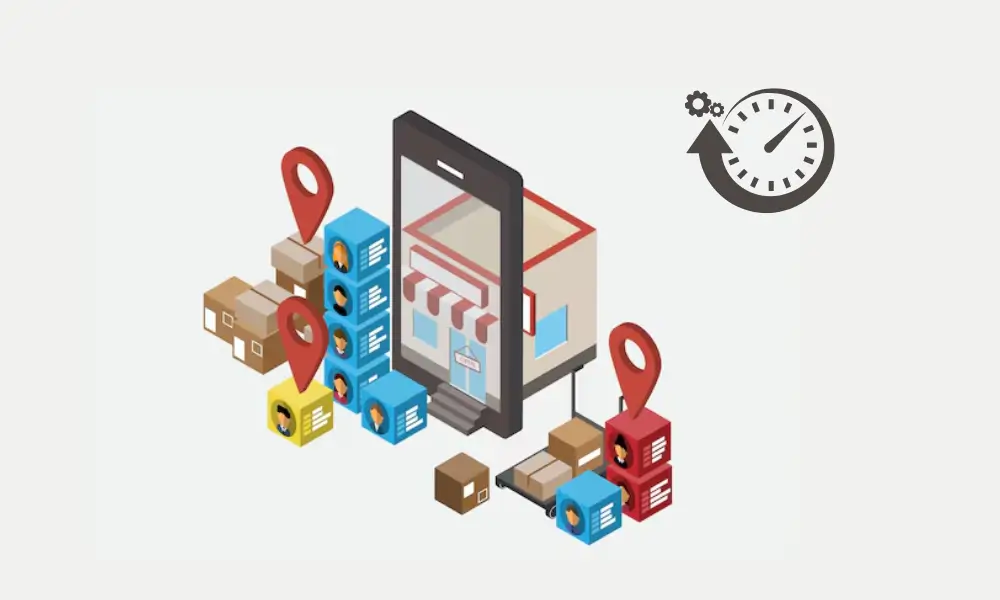
Real-time inventory systems allow customers to check stock availability at their local store before making a trip. This not only enhances convenience but also increases the likelihood of completing a sale. Technologies such as point-of-sale (POS) systems integrated with eCommerce platforms can help businesses keep inventory data synchronized. These systems track inventory levels in real-time and update them across all channels, ensuring that customers receive accurate information no matter where they choose to shop.
- Unified Customer Profiles
To provide a truly seamless omnichannel customer experience, businesses must also unify customer data across online and offline channels. A unified customer profile aggregates data from multiple touchpoints—such as website interactions, in-store purchases, mobile app usage, and social media engagement—into a single, comprehensive profile. This allows businesses to understand the full scope of a customer’s behavior, preferences, and purchasing history, enabling them to deliver more personalized experiences.
CRM systems play a crucial role in unifying customer data. When integrated with both eCommerce platforms and in-store POS systems, a CRM allows businesses to track customer interactions across all channels, ensuring that customer profiles are consistent and comprehensive. This enables businesses to create personalized marketing campaigns, loyalty programs, and customer service experiences that resonate with individual customers, regardless of how they interact with the brand.
- Cross-Channel Promotions and Loyalty Programs
Another technique for achieving smooth integration between online and offline channels is to offer cross-channel promotions and loyalty programs. Customers expect to receive consistent promotions and rewards no matter where they shop, so businesses must ensure that their offers are available across all platforms.
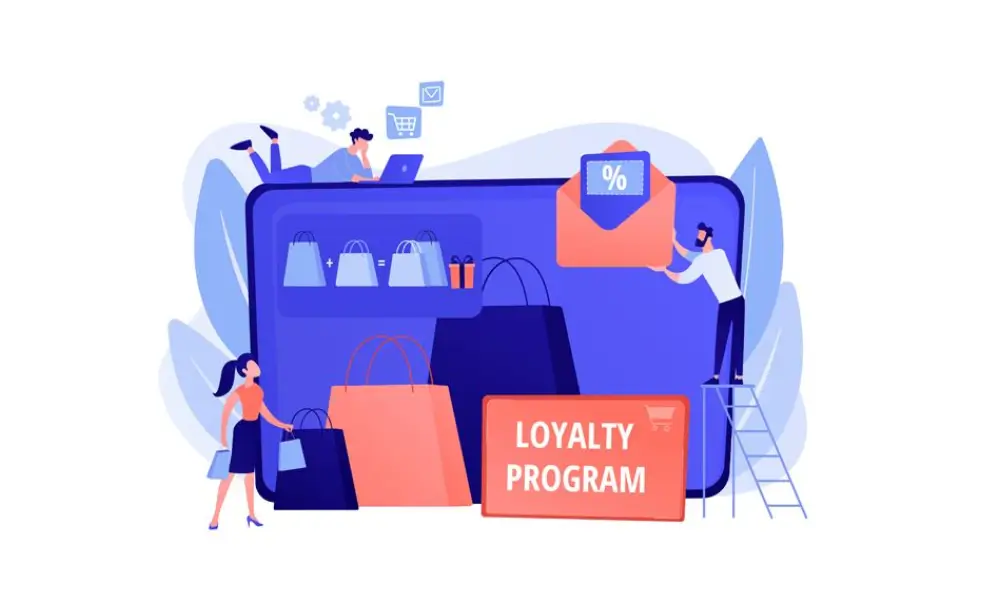
Loyalty programs are another powerful tool for driving cross-channel engagement. By offering a unified loyalty program that spans both online and offline interactions, businesses can incentivize customers to engage with the brand across platforms. For instance, customers should be able to earn and redeem loyalty points whether they make a purchase online or in-store, and their points balance should update in real-time across all channels. This creates a cohesive experience where customers feel rewarded no matter how they choose to shop.
Digital wallets and mobile apps can be particularly effective in facilitating cross-channel promotions and loyalty programs. These tools allow customers to store their rewards, coupons, and loyalty points in one place, making it easy to access and redeem them across different channels. This seamless integration ensures that customers enjoy a consistent experience, whether they are shopping on a website, using a mobile app, or visiting a physical store.
- Omnichannel Customer Service
Providing consistent customer service across online and offline channels is another essential technique for achieving smooth integration in an omnichannel customer experience. Customers expect to receive the same level of support regardless of how they contact the business, whether it’s through live chat on the website, over the phone, via social media, or in person at a store. Ensuring that customer service is integrated across all platforms helps create a unified experience that builds trust and loyalty.
To achieve this, businesses should centralize their customer service operations by using CRM systems that provide support teams with access to the same customer data across all channels. This allows customer service representatives to assist customers seamlessly, whether they are addressing an issue from an online order or handling an in-store return. Moreover, omnichannel customer service tools, such as live chat or chatbots, can be deployed on both websites and mobile apps to provide real-time assistance, while in-store associates can access the same tools to resolve customer inquiries on the spot.
Techniques such as real-time inventory synchronization, unified customer profiles, cross-channel promotions, and integrated customer service play a critical role in achieving smooth integration. When executed effectively, these strategies create a cohesive and personalized customer journey that fosters engagement, loyalty, and long-term success for businesses in the omnichannel world.
Consistent and Personalized Communication
Ensuring a Unified Brand Voice Across All Touchpoints
In an omnichannel customer experience, customers interact with brands through a variety of channels—such as websites, mobile apps, social media, in-store visits, and customer support. Each of these touchpoints offers a unique way for customers to engage with the brand, but they expect the communication and messaging to remain consistent regardless of the platform. A unified brand voice is essential for creating a cohesive experience that makes customers feel connected to the brand, no matter where or how they engage.
The brand voice is not just about the language or tone used in marketing messages; it encompasses the entire personality of the brand and how it communicates with customers. A consistent brand voice helps reinforce the brand’s identity and values, ensuring that customers can recognize the brand’s presence across different touchpoints. Whether customers are browsing a company’s website, interacting on social media, or speaking with a customer service representative, they should encounter a unified and consistent tone that reflects the brand’s essence.
Inconsistencies in communication can weaken the overall omnichannel customer experience. For example, a brand might use a friendly, informal tone on social media but a more formal, detached tone in email communications. This disparity can confuse customers and make the brand feel disjointed. To avoid this, businesses must develop clear brand guidelines that define the voice, tone, and messaging to be used across all channels. These guidelines should be accessible to all teams—whether they are responsible for digital marketing, customer service, or in-store interactions—to ensure consistency throughout the customer journey.
A unified brand voice also extends to visual and content elements. From the design of the website to the look and feel of mobile apps, and even the layout of physical stores, the brand’s visual identity should be consistent. Using the same colors, fonts, and logos across all touchpoints reinforces the brand’s identity and creates a familiar experience for customers. Consistency in both visual and verbal communication ensures that customers feel a strong connection to the brand, regardless of the platform they use.
To achieve this, businesses must ensure that all teams involved in customer communication are aligned in their efforts. Collaboration between marketing, customer service, product development, and other departments is critical to maintaining a unified voice. Regular training sessions, cross-department meetings, and the use of centralized brand guidelines can help ensure that everyone understands the importance of consistency and follows the same communication standards.
Personalizing Communication at Every Interaction Using Customer Data
While consistency is vital for creating a cohesive brand experience, it is equally important to personalize communication to meet the unique needs and preferences of each customer. Personalization in an omnichannel customer experience is about delivering the right message to the right person at the right time, based on data-driven insights. By leveraging customer data, businesses can tailor their communication to resonate with individual customers, making each interaction more relevant, meaningful, and impactful.
Personalized communication begins with understanding who the customer is and where they are in their journey with the brand. Businesses can collect data from various sources, including website visits, purchase history, social media engagement, email interactions, and in-store behavior, to build a comprehensive customer profile. This data helps businesses segment their audience and deliver personalized messages that cater to specific customer preferences, behaviors, and needs.
Personalization also extends to the timing and channel of communication. Customers may prefer to receive messages through specific channels—such as email, SMS, or app notifications—and at certain times of day. By analyzing customer data, businesses can identify these preferences and adjust their communication strategies accordingly. For instance, if a customer consistently opens promotional emails in the evening, businesses can time their emails to reach the customer when they are most likely to engage. Likewise, if a customer primarily interacts with the brand via a mobile app, sending personalized push notifications may be more effective than using other channels.
The use of AI and machine learning can further enhance personalization in an omnichannel customer experience. These technologies allow businesses to automate personalized interactions at scale, analyzing vast amounts of customer data to predict preferences, behaviors, and future actions. AI-powered recommendation engines, for example, can provide personalized product suggestions on websites, in emails, and within mobile apps, ensuring that customers receive relevant offers tailored to their individual needs. Machine learning algorithms can also help businesses segment their audiences more effectively, identifying patterns and trends that might not be immediately apparent through manual analysis.
Personalized communication in an omnichannel customer experience should also be dynamic and adaptable. As customer behavior and preferences change over time, businesses must be able to adjust their messaging to remain relevant. For example, a customer who initially engages with a brand through social media may later shift their preference to mobile app interactions. Businesses must be able to track these shifts and adjust their communication strategies to ensure they are reaching the customer through the most effective channels.
One of the most powerful aspects of personalization is its ability to build deeper connections with customers. When customers feel that a brand understands their preferences and tailors communication specifically to them, they are more likely to remain loyal to the brand. This personalized approach fosters a sense of trust and value, as customers feel that their needs are being met in a meaningful way. Over time, this can lead to stronger customer relationships, increased brand loyalty, and higher lifetime customer value.
Unified CDP
The Role of CDPs in Centralizing Customer Data
In an omnichannel customer experience, businesses interact with customers across a variety of channels—such as websites, mobile apps, physical stores, social media platforms, and call centers. Each of these touchpoints generates valuable data about customer behavior, preferences, purchases, and interactions. However, without a system to centralize and organize this data, it often remains siloed within individual platforms, making it difficult for businesses to gain a full understanding of their customers.
A CDP solves this problem by acting as a centralized repository that gathers data from all available channels. CDPs are designed to ingest structured and unstructured data from disparate sources, including CRM systems, eCommerce platforms, social media, email marketing tools, and in-store POS systems. By consolidating this information into a single, unified profile for each customer, CDPs eliminate the data silos that traditionally exist between channels, allowing businesses to access a comprehensive view of their customers’ interactions with the brand.
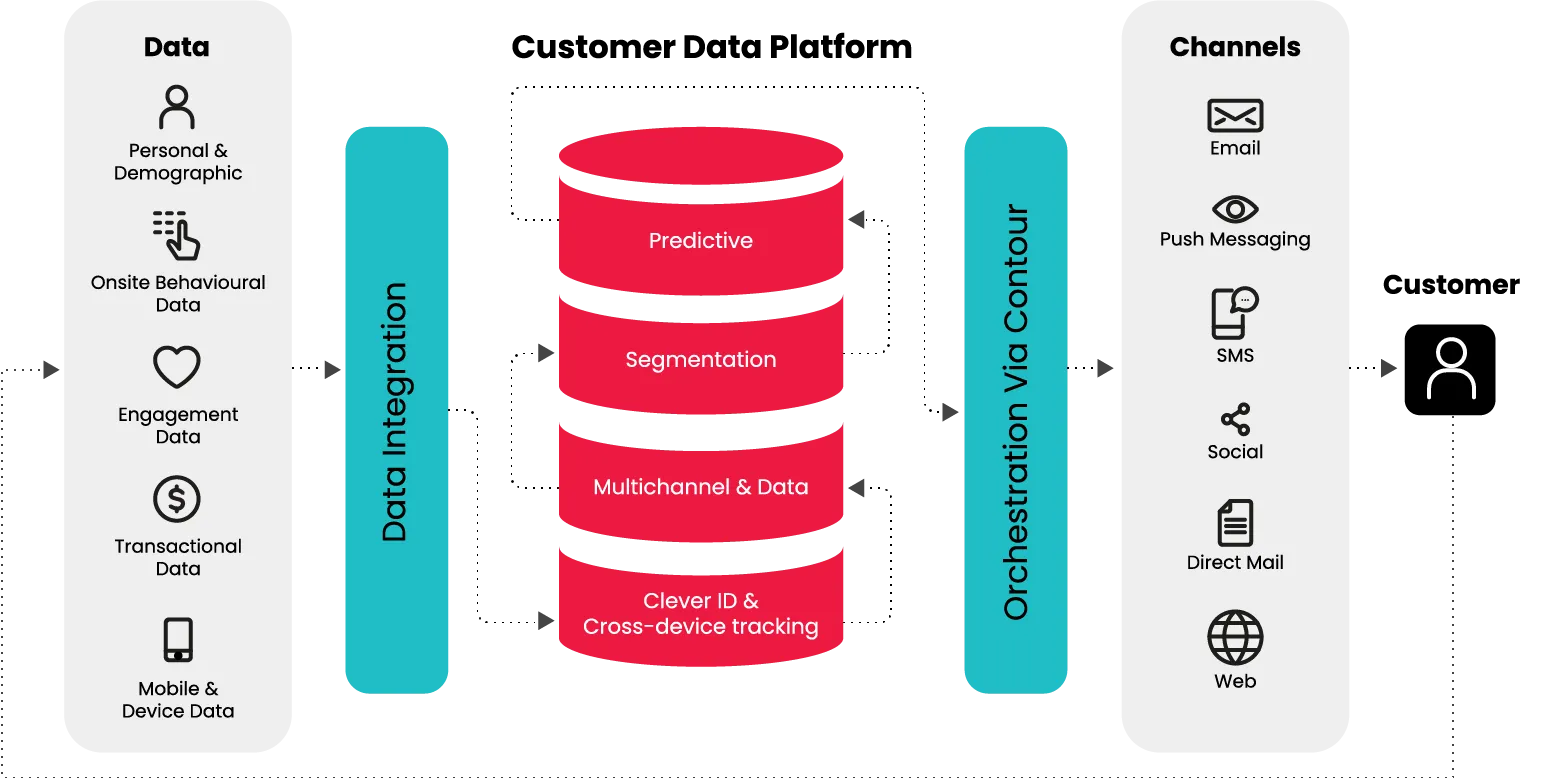
The ability to centralize customer data is essential for creating a cohesive and personalized omnichannel customer experience. Without a CDP, businesses might struggle to connect the dots between online and offline interactions.
Furthermore, CDPs play a critical role in ensuring data accuracy and consistency across channels. Because they pull data from various systems, CDPs regularly update and synchronize customer profiles, ensuring that businesses have access to the most up-to-date information. This is particularly important for delivering real-time personalization and responding to customer needs in a timely manner.
CDPs also help address data privacy and compliance challenges, which are critical in an omnichannel environment where customer data is collected from multiple sources. With increasingly stringent data protection regulations like GDPR and CCPA, businesses must ensure that customer data is handled responsibly and in compliance with legal requirements. CDPs provide businesses with the tools to manage customer consent, track data usage, and ensure compliance across all channels, reducing the risk of regulatory violations and enhancing customer trust.
How CDPs Contribute to a 360-Degree View of the Customer
One of the most valuable contributions of a Customer Data Platform to an omnichannel customer experience is its ability to provide a 360-degree view of the customer. This comprehensive view consolidates all of a customer’s interactions, preferences, purchase history, and behaviors into a single profile, enabling businesses to gain deeper insights into the customer journey. A 360-degree view is critical for delivering personalized, contextually relevant experiences at every touchpoint, and it serves as the foundation for building strong, long-term customer relationships.
The 360-degree view created by a CDP allows businesses to track and analyze customer behavior across channels and over time. Additionally, a 360-degree view enables businesses to predict future customer behaviors and needs. By analyzing historical data, CDPs can identify patterns and trends that help businesses anticipate what customers might want next. For example, if a customer regularly purchases certain products during specific seasons, the business can proactively offer personalized promotions or product recommendations at the right time. This predictive capability allows businesses to stay ahead of customer expectations and deliver value before the customer even realizes they need it, enhancing the overall customer experience.
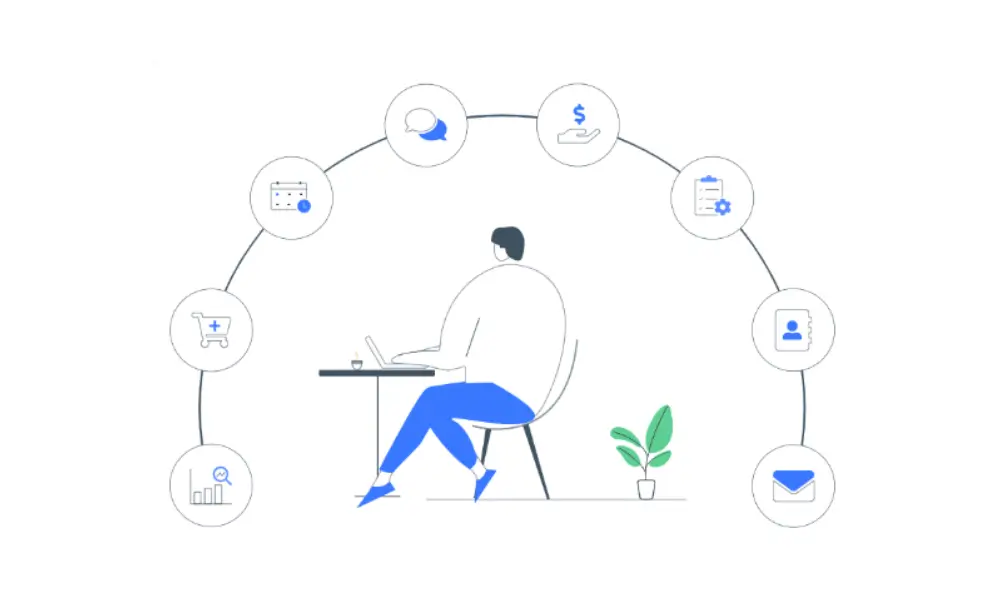
Another benefit of a 360-degree view is its ability to facilitate personalized marketing at scale. With access to a complete view of the customer, businesses can segment their audience more effectively and create highly targeted campaigns. Instead of sending generic marketing messages to a broad audience, businesses can deliver tailored offers based on specific customer behaviors, preferences, and purchase history.
Beyond marketing, a 360-degree view of the customer enhances customer service and support interactions. When customer service representatives have access to a unified customer profile, they can provide more informed and personalized assistance. A CDP’s 360-degree view also contributes to a more seamless transition between online and offline interactions.
The 360-degree view provided by a CDP is a powerful tool for delivering a truly integrated omnichannel customer experience. By consolidating customer data from multiple touchpoints, businesses can gain a holistic understanding of the customer journey, personalize interactions at scale, and create seamless transitions between online and offline channels. This comprehensive view of the customer enables businesses to engage customers more effectively, predict their needs, and deliver personalized, contextually relevant experiences that drive loyalty and long-term success.
Flexible and Adaptive Technology
In the increasingly competitive landscape of modern business, technology plays a critical role in delivering a successful omnichannel customer experience. The ability to create seamless, personalized, and connected interactions across multiple platforms depends on the flexibility and adaptability of the technology stack a business employs. Choosing the right technology infrastructure is essential for ensuring that every touchpoint in the customer journey is unified, efficient, and responsive to customer needs
Choosing the Right Technology Stack for Omnichannel CX
The foundation of any effective omnichannel customer experience lies in selecting a technology stack that can support a business’s unique needs while providing flexibility and scalability. An omnichannel strategy requires a range of interconnected systems capable of integrating data from various customer touchpoints, managing customer interactions, and ensuring that these interactions remain consistent and personalized across channels. As customer expectations evolve, businesses must choose a technology stack that can adapt to these changing demands and deliver seamless interactions at every step of the customer journey.
The first step in choosing the right technology stack for an omnichannel customer experience is understanding the specific requirements of your business and customers. Different industries and business models may prioritize certain aspects of omnichannel technology over others. For example, a retail company may require robust eCommerce capabilities, real-time inventory management, and mobile app integration, while a B2B enterprise might prioritize account-based marketing tools, personalized email campaigns, and sales automation. By clearly identifying the needs of the business, decision-makers can select the technology solutions that are best suited to meet those goals.
One of the primary considerations when choosing a technology stack for omnichannel customer experience is the ability to integrate different platforms and tools. Seamless integration between systems such as CRM, ERP, eCommerce platforms, customer support tools, and marketing automation software is crucial for creating a unified customer journey. Without integration, businesses risk operating in silos where data and customer insights remain disconnected, leading to inconsistent interactions across touchpoints. Choosing technology platforms with robust API capabilities or built-in connectors ensures that different systems can communicate and share data, providing a holistic view of the customer and enabling more effective personalization and engagement.
Flexibility is another key factor when choosing a technology stack. Businesses need systems that can scale as the company grows and adapt to new channels, platforms, and customer behaviors. The technology stack must be able to accommodate changing customer expectations and evolving business strategies. For example, as more customers shift toward mobile commerce, businesses may need to expand their mobile app capabilities or enhance their mobile-first experiences. The right technology stack should be modular and scalable, allowing businesses to add or modify features as needed without disrupting the overall infrastructure.
Additionally, cloud-based solutions have become increasingly important in supporting omnichannel customer experiences. Cloud-based technologies offer greater flexibility, accessibility, and scalability compared to traditional on-premises systems. They allow businesses to access real-time data from any location, ensure that customer information is up-to-date across channels, and provide the agility needed to respond quickly to market changes. Furthermore, cloud-based platforms can integrate more easily with other systems, reducing the complexity of managing multiple tools and ensuring a more streamlined omnichannel strategy.
Finally, businesses must prioritize user-friendly technology when choosing their omnichannel customer experience stack. The platforms and tools implemented should be easy for internal teams to use, ensuring that customer-facing employees—whether in sales, marketing, or customer service—can leverage these systems to deliver seamless and personalized interactions. Training employees on how to use the chosen technology effectively is critical for maximizing its potential and ensuring that the technology aligns with the brand’s omnichannel goals.
The Role of CRM, ERP, and Other Systems in Facilitating Seamless Customer Interactions
A successful omnichannel customer experience is built on the ability to deliver seamless interactions across every touchpoint, and this is where systems like Customer Relationship Management (CRM), Enterprise Resource Planning (ERP), and other integrated platforms play a vital role. These systems serve as the backbone of the omnichannel strategy, ensuring that customer data, product information, and business processes are interconnected and accessible across all channels.
- CRM Systems: Personalizing the Customer Journey:
A CRM system is one of the most essential tools in any omnichannel customer experience strategy. CRM platforms centralize customer data, allowing businesses to track and manage interactions across multiple channels, from online shopping and social media engagements to in-store visits and customer service calls. By consolidating customer data in one place, CRMs provide businesses with a comprehensive, 360-degree view of each customer, enabling personalized communication, targeted marketing, and better customer support.
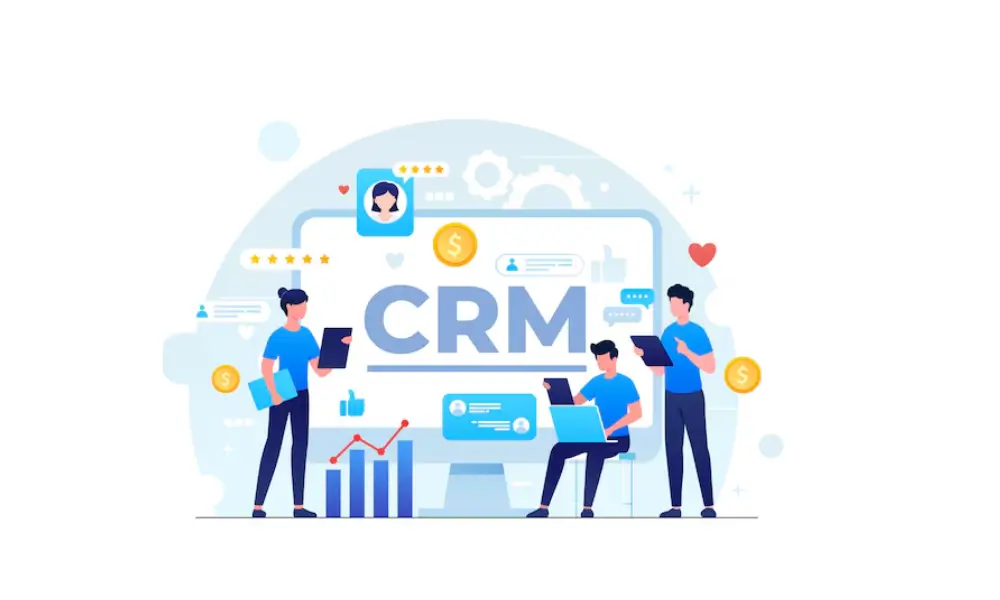
In an omnichannel environment, CRM systems enable businesses to deliver consistent, personalized experiences regardless of where the customer interacts with the brand. For example, if a customer engages with a brand via live chat on a website, a CRM can record that interaction and make it available to customer service agents who might assist the customer through a different channel, such as phone support or in-store assistance. This continuity ensures that the customer does not have to repeat information and feels recognized and valued by the brand.
CRM systems also facilitate more personalized marketing efforts by allowing businesses to segment their audience based on behavior, preferences, and demographics. This segmentation allows businesses to send tailored messages, recommendations, and offers that resonate with individual customers. For example, a customer who frequently purchases outdoor gear might receive personalized promotions for new products in that category. By leveraging CRM data, businesses can enhance their omnichannel customer experience by delivering relevant content and offers that drive engagement and loyalty.
- ERP Systems: Streamlining Operations and Inventory Management:
While CRM systems focus on managing customer interactions and relationships, ERP systems handle the operational side of the business, including inventory management, supply chain operations, and financial processes. In an omnichannel customer experience, ERP systems are essential for ensuring that back-end operations support the seamless flow of information across all touchpoints. For example, when a customer places an order online, the ERP system ensures that inventory levels are updated in real-time, allowing customers to see accurate stock information whether they are shopping online, in-store, or through a mobile app.
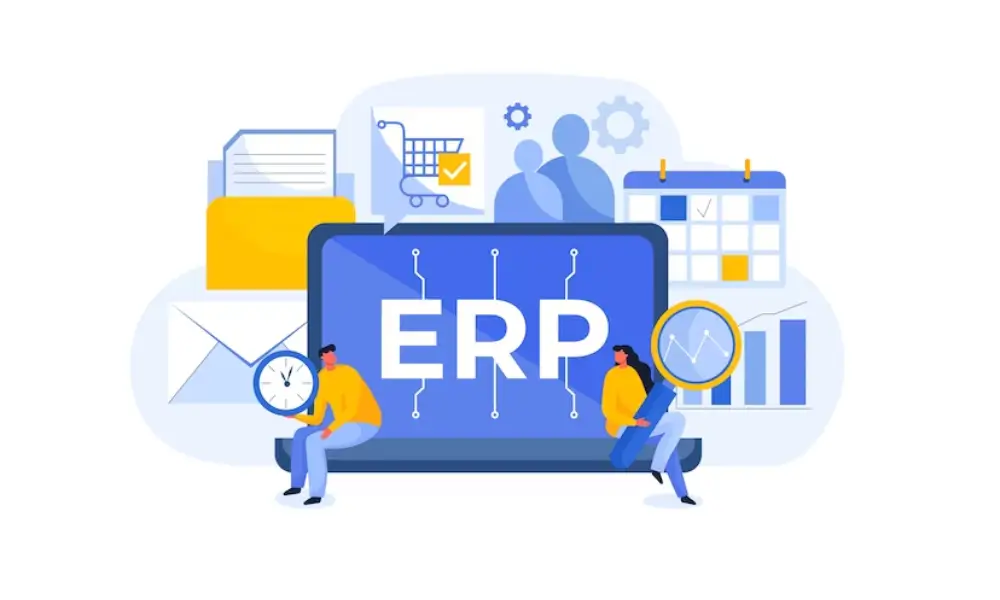
ERP systems also play a crucial role in enabling the buy online, pick up in-store (BOPIS) model, a popular feature of omnichannel strategies. By integrating inventory and order management systems with eCommerce platforms, ERPs ensure that online orders are processed efficiently and that the correct inventory is available for customers when they visit the store. This level of integration enhances the customer experience by providing flexibility and convenience, while also streamlining internal operations.
Moreover, ERP systems help businesses manage product information, ensuring that pricing, availability, and descriptions are consistent across all channels. This consistency is essential in creating a unified customer experience where customers receive the same information whether they are browsing products online or speaking with an in-store sales associate. By integrating ERP systems with CRM platforms, businesses can also ensure that customer orders, purchases, and returns are tracked and managed efficiently, providing a seamless experience throughout the customer lifecycle.
- Marketing Automation and Customer Support Tools:
In addition to CRM and ERP systems, other technologies such as marketing automation platforms and customer support tools are critical for delivering a cohesive omnichannel customer experience. Marketing automation platforms allow businesses to manage and automate communication across various channels, ensuring that customers receive personalized messages at the right time based on their behavior and preferences. For example, if a customer abandons their cart online, the marketing automation system can trigger a personalized email reminder with relevant product recommendations, encouraging them to complete the purchase.

Customer support tools, such as help desk software and live chat platforms, also play a vital role in ensuring seamless customer interactions. These tools enable businesses to provide real-time assistance to customers regardless of where they are in their journey. For example, a customer browsing a product on a website may have questions and can instantly connect with a live chat representative who has access to the customer’s CRM profile and recent interactions. This enables the representative to provide personalized support, improving the customer experience and resolving issues more efficiently.
Flexible and adaptive technology is the backbone of a successful omnichannel customer experience strategy. By choosing the right technology stack—one that integrates CRM, ERP, marketing automation, and customer support systems—businesses can ensure that their operations are streamlined, their customer data is unified, and their interactions are personalized across all touchpoints.
Best Practices for Designing an Omnichannel Customer Experience
Mapping the Customer Journey
Identifying Key Touchpoints and Pain Points in the Customer Journey
The customer journey is the path that customers take when engaging with a brand, starting from the awareness stage and continuing through consideration, purchase, and post-purchase interactions. In an omnichannel customer experience, this journey can span multiple touchpoints, such as visiting a website, browsing a mobile app, engaging on social media, visiting a physical store, or contacting customer support. Identifying these touchpoints is crucial for understanding where and how customers interact with the brand.
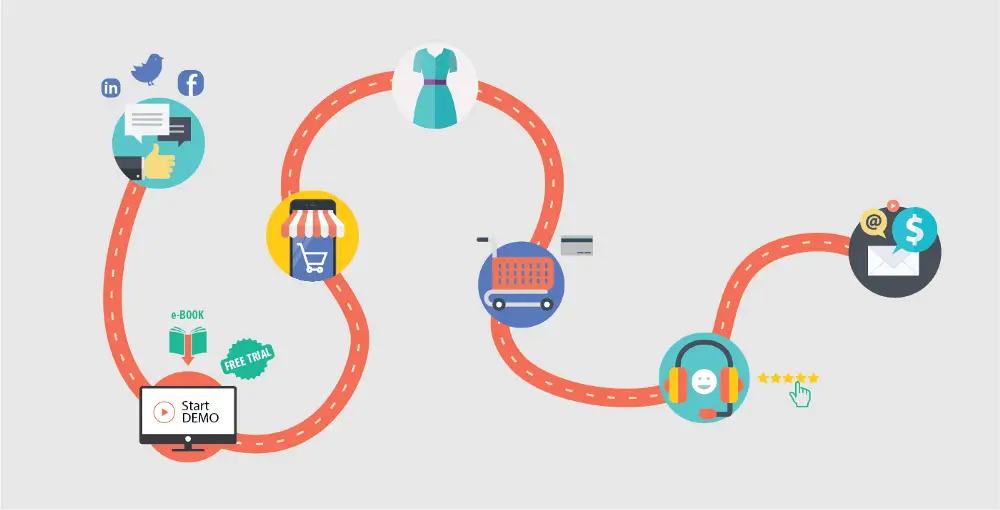
Key touchpoints in an omnichannel customer journey can include:
- Discovery and Awareness: This stage involves customers discovering the brand through channels like social media, search engines, online ads, or word-of-mouth. It is the first point of contact and sets the tone for the rest of the journey.
- Research and Consideration: Once customers are aware of the brand, they often research products or services by visiting the website, reading reviews, browsing through mobile apps, or interacting with sales associates in-store. This phase is critical for providing relevant information and building trust with customers.
- Purchase and Checkout: This is the point where customers decide to make a purchase. It can occur online through an eCommerce site, via a mobile app, or in-store. Ensuring a seamless checkout process across all channels is vital to prevent cart abandonment or customer frustration.
- Post-Purchase and Support: After the purchase, customers may need support for tracking orders, handling returns, or resolving issues. They might reach out through email, live chat, phone, or visit the store in person. Providing efficient and helpful post-purchase support enhances customer satisfaction and loyalty.
- Loyalty and Retention: Retaining customers and fostering long-term relationships involves continued engagement through personalized offers, loyalty programs, and ongoing support. Ensuring consistent communication across channels keeps customers engaged and encourages repeat business.
In addition to identifying key touchpoints, businesses must also uncover potential pain points—areas where customers may encounter friction, confusion, or dissatisfaction. These pain points could arise due to inconsistent messaging, lack of real-time inventory visibility, lengthy checkout processes, or difficulty in contacting customer support. Mapping the journey and identifying pain points allow businesses to address these issues and remove any obstacles that could disrupt the customer experience.
Creating a Cohesive Journey Across Different Channels
Once businesses have mapped out the customer journey and identified key touchpoints and pain points, the next step is to ensure that the journey remains cohesive and seamless across all channels. In an omnichannel customer experience, it is essential that customers can move freely between online and offline channels without encountering disruptions or inconsistencies.
Creating a cohesive journey involves integrating customer data, ensuring consistent messaging, and aligning processes across all platforms. Here are some best practices for creating a unified experience across different channels:
- Unified Customer Profiles: One of the most effective ways to create a cohesive journey is to build unified customer profiles that capture data from all touchpoints. By leveraging systems such as CDP or CRM tools, businesses can centralize customer data and gain a holistic view of each customer’s journey. This allows businesses to personalize interactions and deliver relevant content, offers, and recommendations based on previous behavior, preferences, and purchases, no matter which channel the customer uses next.
- Consistent Messaging and Branding: Customers expect to receive consistent messaging, promotions, and branding across all touchpoints. Whether customers interact with a brand via email, social media, in-store, or on a mobile app, the brand’s tone, visuals, and offers should be aligned. This ensures that customers do not feel confused or disconnected when switching between channels. For example, if a promotion is offered via email, customers should be able to redeem it online or in-store without encountering different terms or conditions.
- Omnichannel Integration: A key aspect of creating a seamless journey is integrating online and offline channels. For example, businesses can offer services like buy online, pick up in-store (BOPIS) or reserve online, try in-store (ROTIS), enabling customers to shop conveniently across platforms. These services enhance the customer journey by providing flexibility and reducing friction. Integration also ensures that customers can start an interaction on one channel and complete it on another without losing context. For example, a customer could start a product return request online and finalize it in-store, with the system tracking the entire journey seamlessly.
- Real-Time Data and Personalization: Ensuring that customer data is updated in real-time is critical for delivering a cohesive omnichannel customer experience. For example, if a customer adds products to their online cart, those items should be visible if the customer logs into a mobile app or visits a physical store. Real-time data integration allows businesses to provide accurate product availability, personalized recommendations, and relevant promotions that reflect the customer’s current journey. This not only improves the experience but also increases the likelihood of conversion and customer satisfaction.
- Optimized Cross-Channel Support: Providing consistent, high-quality customer support across all channels is essential for creating a cohesive journey. Customers should be able to receive assistance through the channel of their choice—whether it’s live chat, social media, phone, or in-store—without having to repeat their issue or start from scratch. A unified support system, where customer data and interaction history are accessible to all support teams, ensures that customers receive quick, personalized service at every stage of their journey.
Mapping the customer journey is a foundational step in designing a successful omnichannel customer experience. By identifying key touchpoints and pain points, businesses can optimize their strategies to ensure a seamless and cohesive journey across all channels. Through the integration of customer data, real-time personalization, consistent messaging, and cross-channel support, businesses can create an omnichannel customer experience that meets customer expectations, drives engagement, and fosters long-term loyalty.
Real-Time Customer Engagement
The Role of Chatbots, Live Support, and Social Media in Omnichannel CX
Real-time customer engagement is a crucial part of an omnichannel customer experience because it allows businesses to respond to customer inquiries and issues as they arise, creating a more seamless and satisfying journey. Several key technologies, including chatbots, live support, and social media, are at the forefront of enabling real-time interaction with customers.
- Chatbots:
Chatbots are one of the most widely used tools for real-time engagement in an omnichannel customer experience. These AI-powered virtual assistants can engage with customers on websites, mobile apps, and messaging platforms, providing immediate responses to frequently asked questions, helping with product recommendations, and even assisting with order tracking and troubleshooting. Chatbots are particularly valuable in handling high volumes of customer inquiries simultaneously, allowing businesses to offer real-time assistance 24/7 without requiring human intervention for routine tasks.

The role of chatbots in an omnichannel customer experience goes beyond basic customer service. Advanced chatbots use machine learning and natural language processing (NLP) to understand the context of customer inquiries and provide personalized, contextually relevant responses. For example, if a customer is browsing a product page and asks about the availability of an item in their local store, the chatbot can access real-time inventory data to provide an accurate answer. Additionally, chatbots can help guide customers through the purchasing process, offering tailored product suggestions based on their browsing history or previous interactions with the brand.
In an omnichannel customer experience, chatbots contribute to a more cohesive journey by ensuring that customers receive consistent and immediate assistance across all touchpoints. Whether the customer is interacting with a chatbot on a mobile app or on the brand’s website, the experience should be seamless and integrated with other channels. For instance, if a customer starts a conversation with a chatbot online and later visits a physical store, the chatbot should have a record of that conversation, allowing in-store staff to pick up where the chatbot left off.
- Live Support
While chatbots are effective for handling routine inquiries, some customers require more personalized attention or complex problem-solving, which is where live support becomes essential. Live chat with human agents provides customers with the opportunity to interact directly with a representative who can offer more detailed and nuanced responses to their questions. Live support is especially important for addressing complex or high-priority issues that require immediate resolution, such as problems with orders, billing inquiries, or technical difficulties.
In the context of an omnichannel customer experience, live support plays a key role in maintaining a consistent and seamless experience across touchpoints. When customers switch between channels, whether from online chat to phone support or from social media to in-store help, their interaction history should follow them. This ensures that live support agents have access to the full context of the customer’s journey, allowing them to provide relevant, personalized assistance without requiring the customer to repeat themselves.
To enhance real-time engagement, many businesses use a combination of chatbots and live support in a hybrid model. In this setup, chatbots handle the initial customer inquiry and attempt to resolve it autonomously. If the inquiry is too complex for the chatbot, the conversation is escalated to a live agent who can take over seamlessly. This approach ensures that customers receive immediate attention while still having access to human support when necessary, creating a more satisfying and efficient omnichannel customer experience.
- Social Media
Social media platforms have become one of the most prominent channels for real-time customer engagement. Customers often turn to platforms like Twitter, Facebook, Instagram, or LinkedIn to ask questions, share feedback, or voice complaints, expecting a prompt response from the brand. Social media’s immediacy and public visibility make it a critical touchpoint for businesses to manage, as unresolved or poorly handled inquiries can quickly lead to negative sentiment and damage a brand’s reputation.

In an omnichannel customer experience, social media is not just a channel for marketing and promotion; it is also a vital tool for customer service and engagement. Businesses must actively monitor social media platforms for customer inquiries and respond in real-time to provide timely and relevant support. The ability to engage with customers on social media platforms also allows businesses to resolve issues publicly, showcasing their commitment to customer satisfaction and improving brand perception.
Social media also plays an important role in integrating other channels into the omnichannel customer experience. For example, if a customer reaches out on Twitter with a service issue, the social media team can escalate the matter to a live support agent, who can continue the conversation via phone or email, ensuring that the customer receives the assistance they need. By linking social media engagement with other support channels, businesses can create a more cohesive and seamless experience for customers, regardless of where the interaction begins.
How to Ensure Immediate and Effective Customer Support
Providing immediate and effective customer support is a key element of delivering a successful omnichannel customer experience. In today’s competitive environment, customers expect businesses to respond quickly to their inquiries, and any delay in service can lead to dissatisfaction or loss of trust. Below are some strategies that businesses can implement to ensure that their customer support is both immediate and effective across all channels.
- Implementing an Omnichannel Support Strategy: An effective omnichannel customer support strategy ensures that customers receive consistent, high-quality service regardless of the channel they use to interact with the brand. This involves integrating all support channels—such as live chat, phone support, email, and social media—into a unified system that allows agents to access customer information and interaction history across platforms. By creating a centralized customer support system, businesses can ensure that agents have the context they need to provide personalized and efficient assistance, whether the interaction starts online, through social media, or over the phone.
- Leveraging AI and Automation for Speed: One of the most effective ways to ensure immediate customer support is by leveraging AI-powered automation tools such as chatbots and virtual assistants. These tools can handle a high volume of inquiries in real time, providing instant responses to common questions and resolving simple issues without requiring human intervention. Automating routine tasks, such as order tracking or answering FAQs, allows live agents to focus on more complex or high-priority cases, reducing response times and improving overall efficiency.
- Training Customer Support Teams for Omnichannel Engagement: To deliver effective real-time support, customer service teams must be trained to engage with customers across all channels. This means that support agents should be proficient in handling live chat inquiries, responding to social media comments, and offering phone or email support, all while maintaining a consistent tone and quality of service. Training programs should emphasize the importance of context in customer interactions, teaching agents how to use customer data to personalize their responses and resolve issues efficiently. Additionally, businesses should provide agents with the tools and resources they need to succeed in an omnichannel environment. This includes access to integrated CRM systems, customer data platforms, and unified communication tools that allow agents to track customer interactions across channels and deliver consistent support.
- Monitoring and Optimizing Response Times: To ensure immediate customer support, businesses must closely monitor response times across all channels and continuously optimize their processes. Real-time reporting and analytics tools can provide insights into how quickly customer inquiries are being resolved and identify any bottlenecks that may be slowing down response times. By analyzing these metrics, businesses can make data-driven decisions to improve the efficiency of their customer support operations and ensure that customers receive timely assistance.
Real-time customer engagement is a vital component of a successful omnichannel customer experience. By leveraging tools such as chatbots, live support, and social media, businesses can provide immediate, personalized assistance to customers at every stage of their journey. Ensuring effective customer support across all channels requires a combination of technology, strategy, and training, with a focus on delivering fast, relevant responses that meet customer expectations.
Omnichannel Personalization
How to Leverage Data to Deliver Tailored Experiences
In an omnichannel customer experience, leveraging data is crucial for delivering personalized interactions that resonate with customers. Data is the backbone of personalization, enabling businesses to gain insights into customer behaviors, preferences, purchase history, and engagement patterns across different touchpoints. The more data a business collects and analyzes, the better it can understand its customers and offer tailored experiences that meet their unique needs.
Collecting and Centralizing Customer Data
The first step in leveraging data for omnichannel personalization is to collect information from all customer interactions, whether they occur online, offline, or through a combination of both. This data can come from various sources, including eCommerce websites, mobile apps, in-store purchases, customer service interactions, social media engagement, email campaigns, and loyalty programs. The key is to centralize all this data into a unified system, such as a Customer Data Platform (CDP) or a Customer Relationship Management (CRM) system. By doing so, businesses can create a comprehensive view of each customer, with all relevant data available in one place.
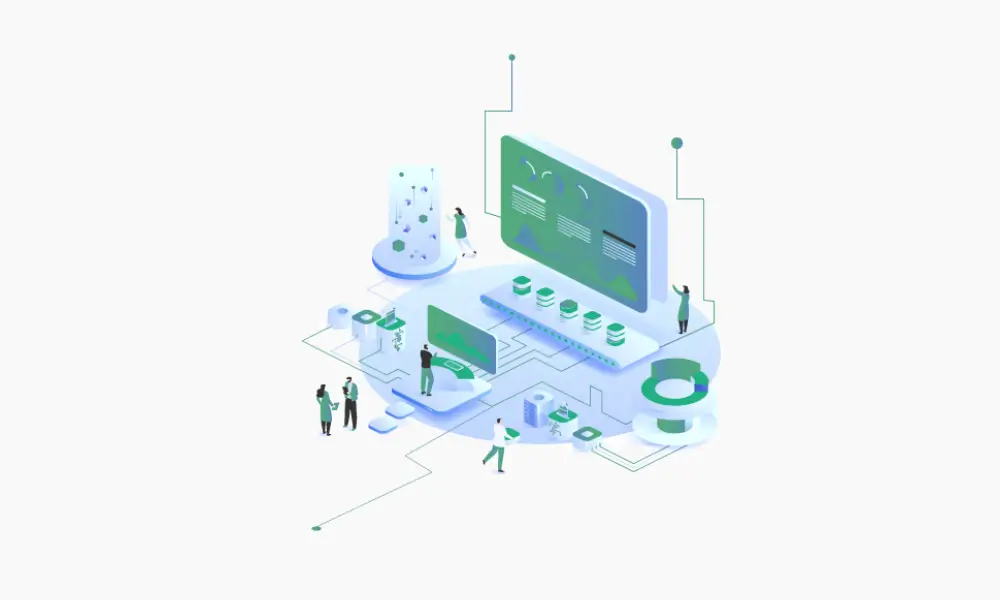
A unified customer profile allows businesses to understand how customers engage with their brand across channels, track their behaviors, and identify patterns. For example, if a customer frequently purchases products in-store but browses online for product reviews or compares prices, businesses can use this data to personalize their future interactions by offering targeted promotions or recommendations based on both their online and offline behaviors.
Analyzing Data for Personalization
Once the data is collected and centralized, businesses can use advanced analytics and machine learning algorithms to segment customers based on specific attributes, such as demographics, purchase history, browsing behavior, and preferences. This segmentation allows businesses to tailor their messaging and offers to each customer segment, creating more relevant and personalized experiences. For example, customers who have shown interest in a particular product category—such as electronics or fashion—can receive personalized recommendations or promotions for similar items.
Predictive analytics can further enhance personalization by forecasting customer needs and behaviors based on historical data. For instance, if a customer regularly purchases a specific product during certain times of the year, predictive analytics can anticipate when they are likely to make their next purchase and deliver personalized offers or reminders just in time. This level of personalization creates a more meaningful and engaging customer experience, driving higher conversion rates and customer satisfaction.
In addition to product recommendations and offers, data can be used to personalize content across various touchpoints. For example, if a customer frequently interacts with a brand’s blog or social media channels, businesses can deliver tailored content—such as articles, tutorials, or videos—that align with their interests. This not only enhances the customer experience but also helps build stronger connections between the customer and the brand.
Syncing Promotions, Inventory, and Customer Profiles Across Channels
For an omnichannel customer experience to be truly seamless and personalized, businesses must ensure that promotions, inventory, and customer profiles are synchronized across all channels. Inconsistent experiences—such as differing product availability, pricing, or promotions between channels—can lead to customer frustration and diminish trust in the brand. Synchronizing these elements is essential for creating a cohesive and frictionless experience that encourages customers to engage with the brand across multiple platforms.
- Synchronizing Promotions: One of the most effective ways to engage customers in an omnichannel environment is through personalized promotions. However, to deliver a consistent experience, businesses need to ensure that promotions are synchronized across all channels. This means that any discounts, coupons, or special offers available on the website should also be available in the mobile app, in-store, and through other channels, such as email or social media. Synchronization prevents customer confusion and ensures that they can take advantage of promotions regardless of where they choose to shop.
- Real-Time Inventory Synchronization: Real-time inventory synchronization is another crucial aspect of delivering a personalized and seamless omnichannel customer experience. Customers often engage with multiple channels throughout their shopping journey—for example, they may browse products online before visiting a store to make a purchase. To ensure a positive experience, businesses must synchronize inventory data across all channels so that customers can access accurate information about product availability.
- Syncing Customer Profiles: Syncing customer profiles across channels ensures that businesses can provide personalized and consistent experiences at every touchpoint. A customer’s online behavior—such as browsing history, wishlists, and abandoned carts—should be visible to in-store staff, enabling them to offer personalized assistance and recommendations. Similarly, customer service representatives should have access to the customer’s full interaction history, whether the customer previously engaged via email, live chat, or social media.
Strategies for Creating Cross-Channel Marketing Campaigns
Creating cross-channel marketing campaigns that are integrated and personalized is essential for driving engagement and reinforcing the omnichannel customer experience. Customers interact with brands through a variety of channels, and it’s important to deliver a consistent message across all platforms while tailoring the content and offers to the customer’s preferences and behaviors. Here are some strategies for creating effective cross-channel marketing campaigns.
- Unified Messaging and Branding: Consistency is key when it comes to cross-channel marketing campaigns. Businesses must ensure that their messaging, tone, and branding are unified across all platforms—whether the campaign is running on social media, email, mobile apps, or in-store. A cohesive brand voice helps build trust and reinforces the brand’s identity in the minds of customers.
- Personalization Across Channels: Personalization should be at the heart of every cross-channel marketing campaign. By leveraging customer data and segmentation, businesses can create targeted campaigns that resonate with individual customers. For instance, personalized email campaigns can be triggered based on customer behavior—such as abandoned carts, product views, or previous purchases—while mobile push notifications can deliver time-sensitive offers tailored to the customer’s preferences.
- Integrating Loyalty Programs: Loyalty programs are another powerful tool for driving engagement through cross-channel marketing campaigns. By integrating loyalty programs across channels, businesses can offer personalized rewards and incentives that encourage repeat purchases.
Omnichannel personalization is a vital component of delivering a seamless and engaging customer experience. By leveraging data, synchronizing promotions, inventory, and customer profiles across channels, and implementing personalized cross-channel marketing campaigns, businesses can create tailored experiences that resonate with individual customers. This level of personalization not only enhances the overall omnichannel customer experience but also drives customer loyalty, satisfaction, and long-term business success. Through thoughtful integration and a customer-centric approach, businesses can deliver the personalized, cohesive interactions that today’s customers expect.
Tools and Technologies Supporting Omnichannel Customer Experience
CRM Systems
How CRM Supports Omnichannel by Unifying Customer Interactions
CRM systems play a pivotal role in the omnichannel customer experience by unifying customer interactions across all touchpoints. At its core, a CRM system consolidates customer data from multiple channels—whether it’s through in-store purchases, online browsing, mobile app interactions, or social media engagements—into a single, centralized platform. This unified view of customer data allows businesses to track the full customer journey, enabling them to deliver more personalized and consistent experiences.
In an omnichannel environment, customers interact with brands through various platforms, often switching between them during their journey. A CRM system captures these interactions in real time, ensuring that customer service representatives, marketing teams, and sales personnel have access to a complete and up-to-date profile of each customer. This prevents data silos and allows businesses to provide tailored interactions, no matter the channel. For instance, if a customer engages with a chatbot on a website, their conversation history can be accessed by a customer service agent if the customer decides to visit the store or call in for further assistance.
By unifying customer interactions, CRM systems enable businesses to deliver seamless and consistent experiences across all channels, creating a cohesive omnichannel customer experience. This not only improves customer satisfaction but also strengthens brand loyalty, as customers feel recognized and valued throughout their journey.
The Role of Cloud-Based CRM in Real-Time Data Management
Cloud-based CRM systems are especially valuable in the omnichannel landscape due to their ability to manage real-time data across multiple platforms. Unlike traditional on-premises CRM systems, cloud-based CRMs provide businesses with the flexibility to access and update customer data from anywhere, at any time. This is crucial in today’s fast-paced, always-connected world, where customers expect real-time responses and personalized interactions.
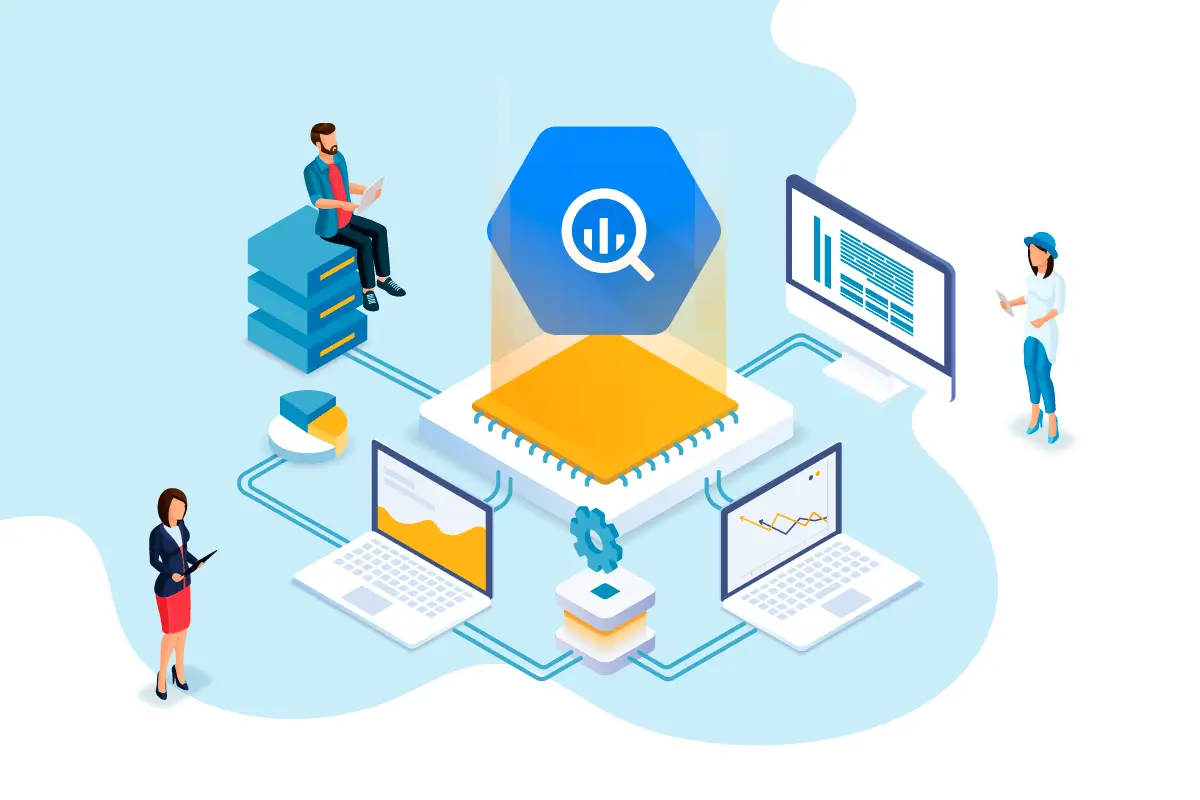
With cloud-based CRM systems, customer data is updated in real time as interactions occur, ensuring that all teams—whether marketing, sales, or customer support—have access to the most current information. For example, if a customer makes an online purchase, their CRM profile is instantly updated with the transaction details, allowing marketing teams to tailor future communications and promotions based on their latest purchase behavior.
Additionally, cloud-based CRMs allow for greater scalability and integration with other tools, such as marketing automation platforms, customer data platforms, and analytics tools. This seamless integration ensures that businesses can manage customer data effectively while providing real-time personalization across all touchpoints, enhancing the overall omnichannel customer experience.
Marketing Automation Tools
How Marketing Automation Platforms Help Create Omnichannel Experiences
Marketing automation tools are essential for creating a cohesive and personalized omnichannel customer experience. These platforms enable businesses to automate repetitive marketing tasks—such as email campaigns, social media posts, and ad targeting—while maintaining a personalized approach for each customer. In an omnichannel environment, where customers interact with brands through various channels, marketing automation tools help ensure that communications remain consistent, timely, and relevant across all platforms.
One of the key ways marketing automation supports omnichannel experiences is through customer segmentation. By leveraging data from CRM systems and customer data platforms, marketing automation tools can segment customers based on their behaviors, preferences, and interactions. This allows businesses to deliver targeted messages, offers, and content that resonate with each customer segment, regardless of whether the interaction occurs via email, mobile app, social media, or in-store.
Moreover, marketing automation tools enable businesses to create cross-channel campaigns that follow customers throughout their journey. For example, a customer who browses products on a website but abandons their cart may receive a personalized follow-up email, a mobile app notification, or even a retargeted social media ad, all aimed at encouraging them to complete their purchase. This level of automation and personalization ensures that customers experience a seamless journey, no matter where they engage with the brand.
Examples of Omnichannel Marketing Tools
Several marketing automation platforms are designed to support omnichannel experiences by integrating customer data across multiple channels and delivering personalized, automated campaigns. Some of the most popular tools include:
- HubSpot: A comprehensive marketing, sales, and CRM platform that enables businesses to create and manage omnichannel campaigns. HubSpot offers tools for email marketing, social media management, lead nurturing, and customer segmentation, all integrated into a unified platform.
- Marketo: A powerful marketing automation tool that focuses on lead management, email marketing, and customer engagement. Marketo’s omnichannel capabilities allow businesses to create personalized campaigns that span multiple touchpoints, including email, social media, and mobile.
- Salesforce Marketing Cloud: An enterprise-level platform that integrates with Salesforce CRM to deliver personalized marketing across various channels. Salesforce Marketing Cloud enables businesses to automate campaigns, segment audiences, and provide real-time personalization through email, mobile, social media, and web.
- ActiveCampaign: A marketing automation platform that combines email marketing, CRM, and sales automation. ActiveCampaign allows businesses to create personalized, automated workflows that follow customers through their journey, delivering consistent and relevant communications across channels.
AI and Machine Learning in Omnichannel CX
The Impact of AI on Personalization and Predictive Analytics
AI and machine learning have transformed the way businesses approach personalization in an omnichannel customer experience. AI-powered tools enable businesses to analyze vast amounts of customer data in real time, identifying patterns, preferences, and behaviors that can be used to deliver highly personalized interactions. From personalized product recommendations to dynamic content and targeted promotions, AI plays a crucial role in enhancing the customer experience across all channels.
One of the most impactful uses of AI in omnichannel personalization is through predictive analytics. By analyzing historical data, AI algorithms can predict future customer behavior, allowing businesses to anticipate needs and deliver personalized recommendations before the customer even realizes they want them. For example, an AI-driven eCommerce platform might recommend products based on a customer’s previous purchases, browsing history, and interactions with similar products. This level of personalization not only improves customer satisfaction but also drives higher conversion rates.
AI also enhances customer engagement by enabling real-time personalization across channels. Whether a customer is browsing a website, interacting with a chatbot, or shopping in-store, AI can tailor the experience to the individual, ensuring that they receive relevant and timely information. For instance, an AI-powered chatbot can provide personalized responses based on the customer’s previous interactions, while an AI-driven email campaign can deliver dynamic content that reflects the customer’s most recent behaviors and preferences.
How Machine Learning Improves Customer Segmentation and Targeting
Machine learning, a subset of AI, further enhances omnichannel customer experience by improving customer segmentation and targeting. Traditional customer segmentation often relies on basic demographic or behavioral data, but machine learning can analyze complex patterns and identify more granular segments based on a wide range of factors, such as browsing behavior, purchase history, social media interactions, and engagement levels.
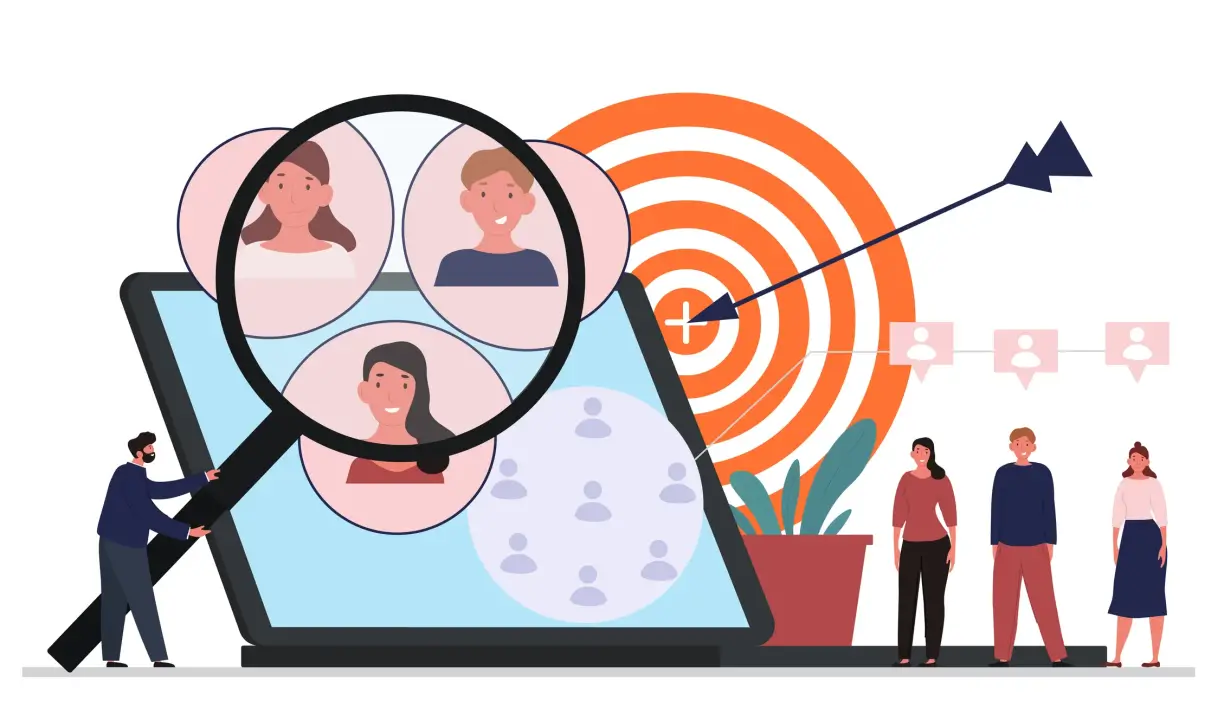
By continuously learning from new data, machine learning algorithms can refine customer segments over time, ensuring that businesses can target the right customers with the right message at the right time. For example, machine learning can identify customers who are at risk of churning and trigger personalized retention campaigns to re-engage them, while simultaneously targeting high-value customers with loyalty rewards and exclusive offers.
This advanced segmentation allows businesses to deliver more personalized and effective marketing campaigns, improving engagement and driving long-term customer loyalty. In an omnichannel context, machine learning ensures that customers receive relevant communications across all touchpoints, enhancing their overall experience with the brand.
CDPs
The Role of CDPs in Omnichannel Data Centralization
CDPs are a vital tool in supporting an omnichannel customer experience by centralizing data from multiple sources and touchpoints. CDPs collect, unify, and organize customer data from various channels—such as websites, mobile apps, social media, and in-store transactions—into a single, comprehensive customer profile. This centralized view allows businesses to better understand customer behavior and preferences, enabling them to deliver personalized and consistent experiences across all channels.
Unlike traditional data management systems, which often store data in silos, CDPs provide real-time access to customer data across departments, including marketing, sales, and customer service. This ensures that every team has the most up-to-date and complete view of the customer, allowing for more personalized and relevant interactions. For example, a marketing team can use CDP data to create personalized campaigns based on a customer’s recent browsing history, while a customer service representative can access the same data to provide tailored support during an inquiry.
Benefits of Implementing a CDP for Customer Experience Improvement
Implementing a CDP offers numerous benefits for businesses looking to improve their omnichannel customer experience. Some of the key advantages include:
- Data Unification: CDPs bring together data from disparate sources, providing a holistic view of each customer’s interactions with the brand. This unified view allows businesses to understand the full customer journey and deliver more personalized, consistent experiences across all touchpoints.
- Real-Time Personalization: CDPs enable businesses to deliver real-time personalization by providing access to the latest customer data. Whether through dynamic website content, personalized email campaigns, or in-store recommendations, businesses can use CDP data to tailor interactions based on the customer’s most recent behavior.
- Improved Customer Segmentation: By centralizing data from multiple channels, CDPs enable businesses to create more granular customer segments based on a wide range of factors, such as purchase history, browsing behavior, and engagement patterns. This improved segmentation allows for more targeted and effective marketing campaigns.
- Enhanced Customer Loyalty: With a deeper understanding of customer behavior, businesses can create more meaningful and personalized experiences that foster long-term customer loyalty. CDPs allow businesses to anticipate customer needs, offer personalized recommendations, and deliver consistent experiences that keep customers coming back.
The tools and technologies supporting an omnichannel customer experience—such as CRM systems, marketing automation platforms, AI and machine learning, and CDPs—play a critical role in delivering seamless, personalized, and consistent interactions across all channels. By unifying customer data, automating personalized marketing, and leveraging advanced analytics, businesses can create an omnichannel experience that not only meets but exceeds customer expectations, driving engagement, loyalty, and long-term success.
Conclusion
For businesses looking to begin implementing omnichannel strategies, the first step is to assess their current customer touchpoints and identify where data silos or inconsistencies may exist. By unifying customer data and creating centralized customer profiles through tools like CRM systems or CDPs, businesses can ensure that they have a holistic view of their customers, enabling them to deliver more personalized and relevant interactions. From there, businesses should invest in technologies that allow them to automate and personalize customer interactions at scale, ensuring that each engagement is timely and contextually relevant.
However, the omnichannel customer experience is not static. Customer preferences and behaviors are constantly evolving, driven by advancements in technology and changes in the market. As a result, businesses must remain flexible and continually innovate to stay ahead of customer expectations. This means embracing emerging technologies—such as AI, machine learning, and predictive analytics—and regularly optimizing their omnichannel strategies to provide better personalization, real-time engagement, and cross-channel integration.
Ultimately, businesses that prioritize omnichannel customer experience and invest in the right tools, strategies, and technologies will be well-positioned to thrive in today’s dynamic marketplace. By delivering a seamless, personalized, and consistent experience across all touchpoints, businesses can not only meet but exceed customer expectations, fostering loyalty and driving sustainable growth for the future.











